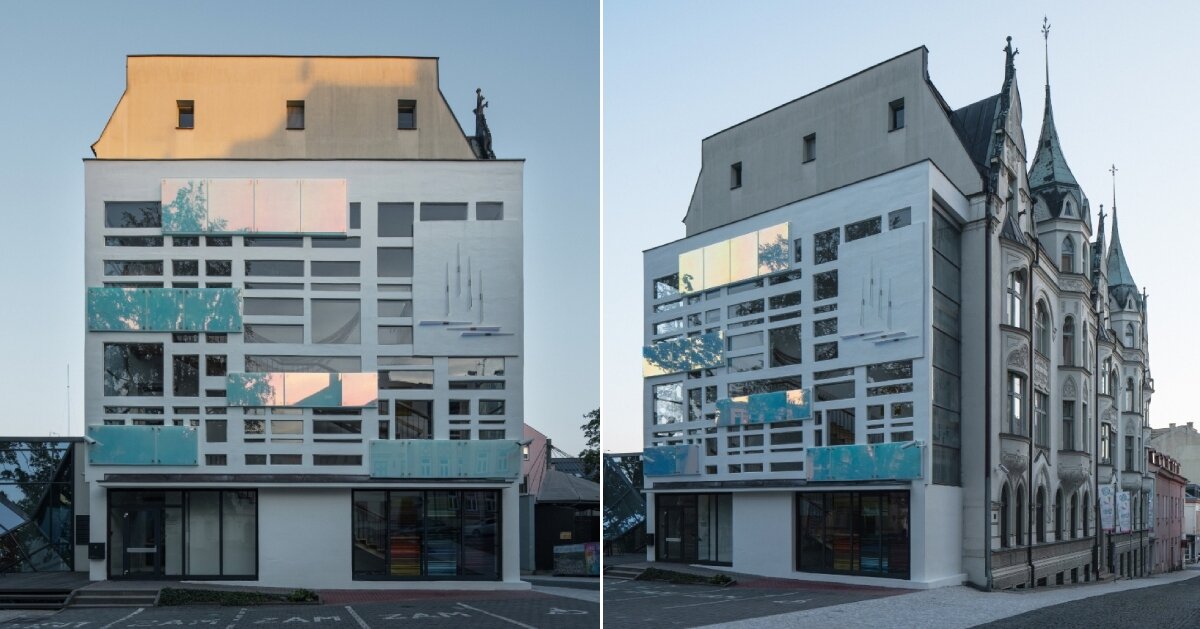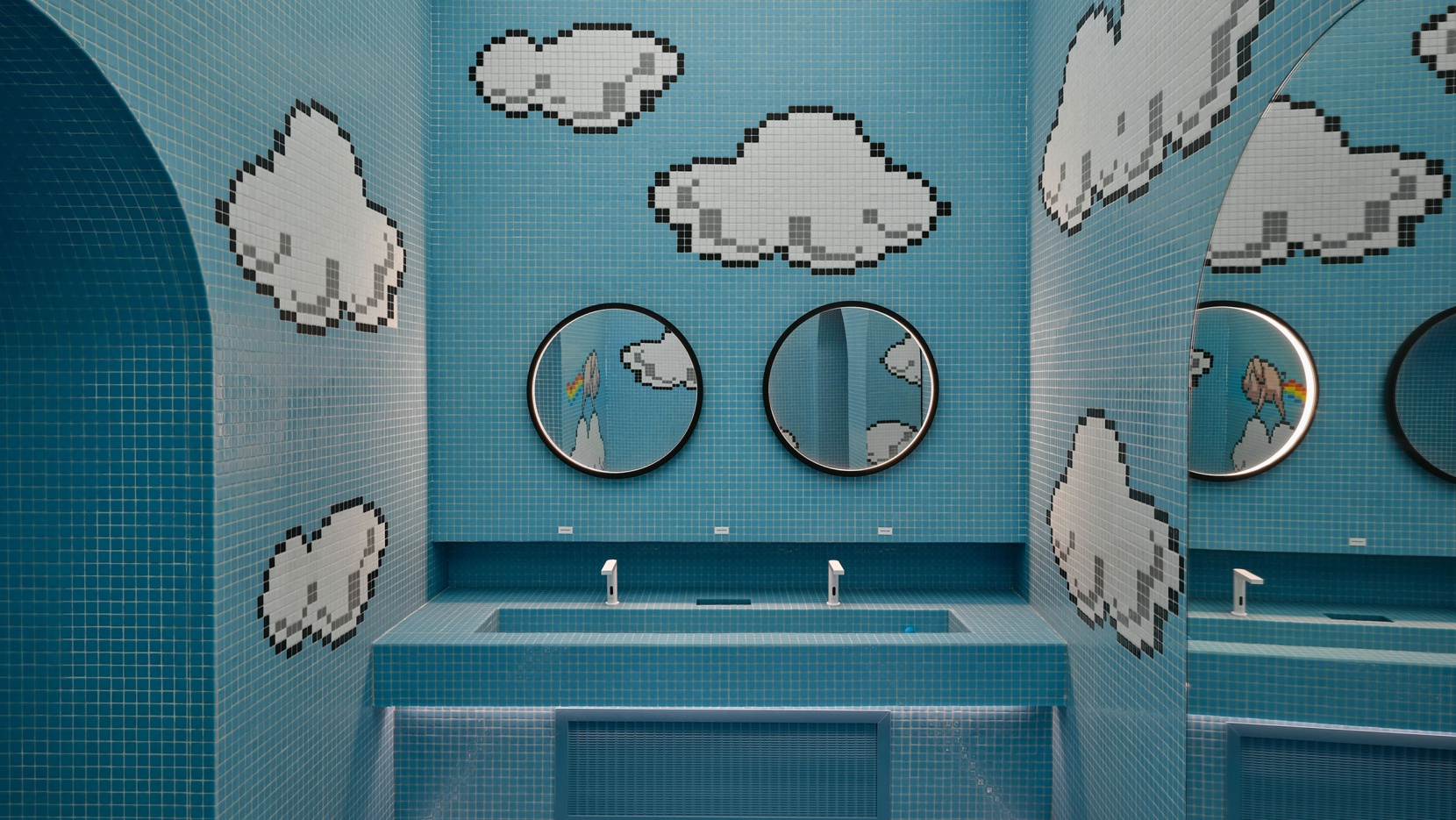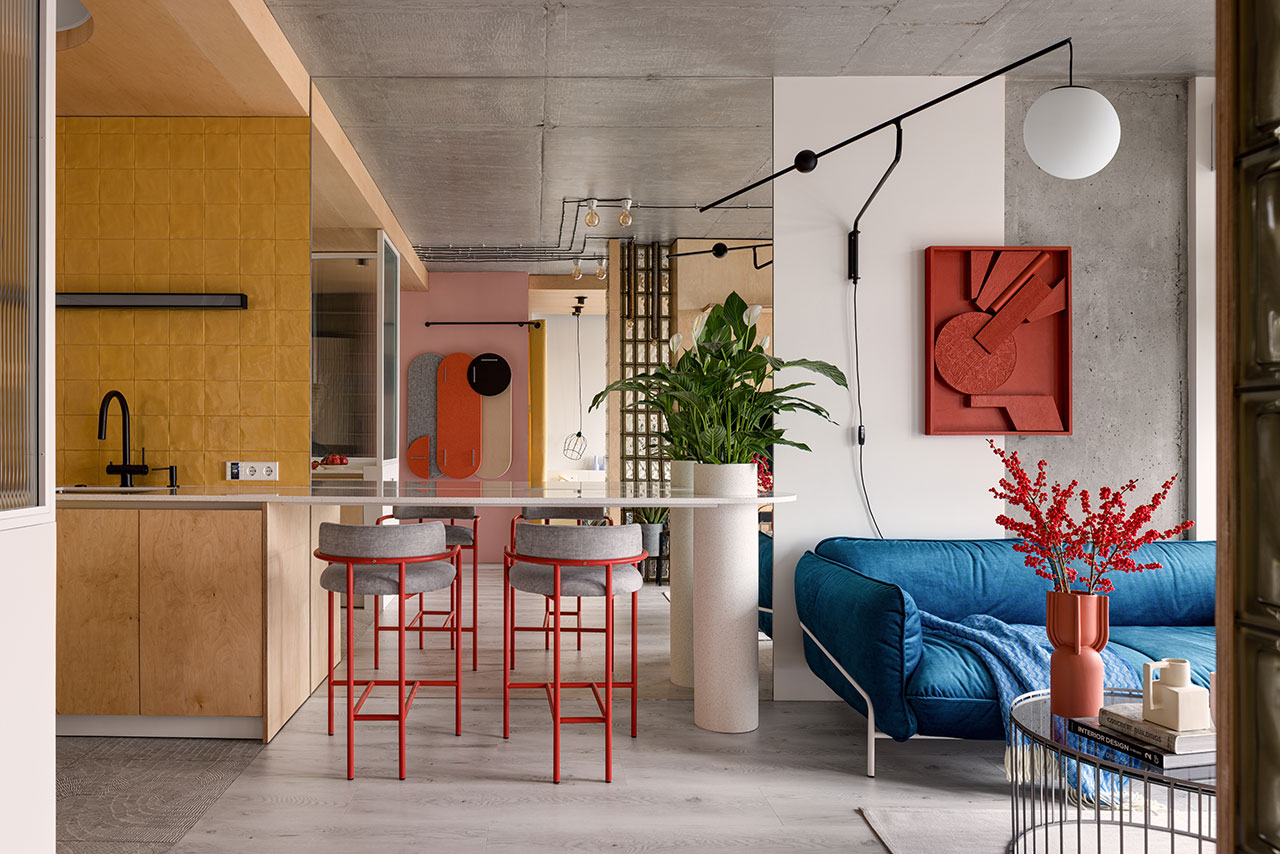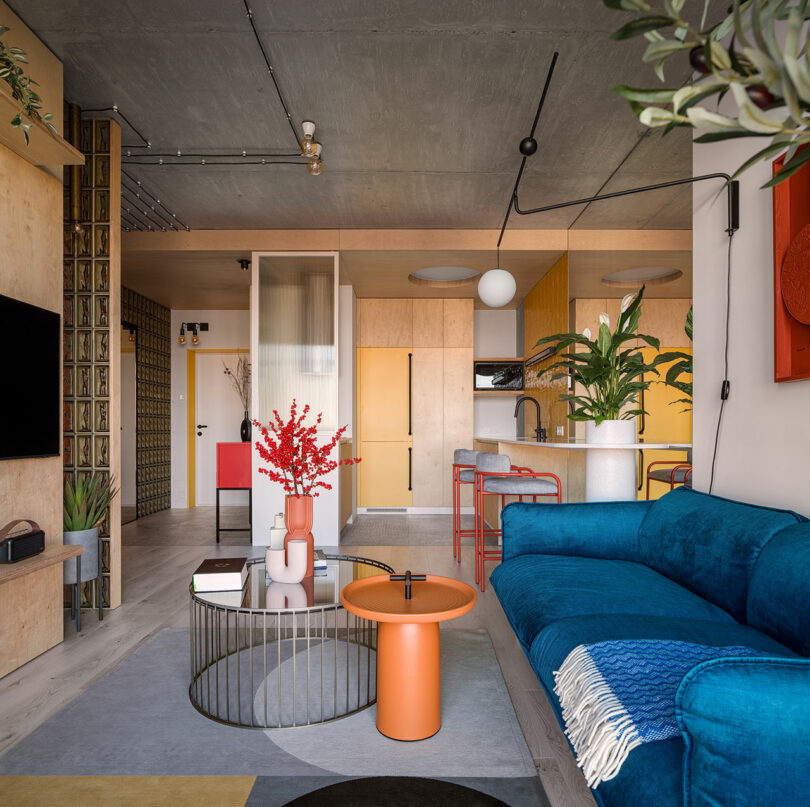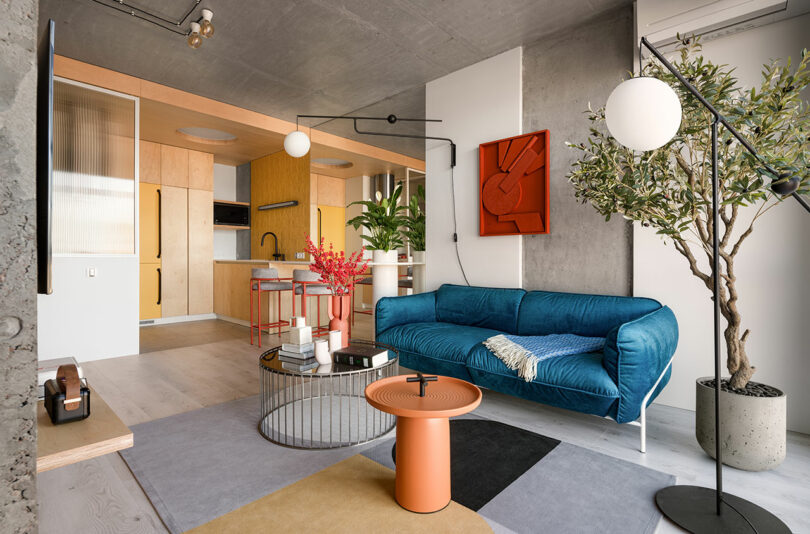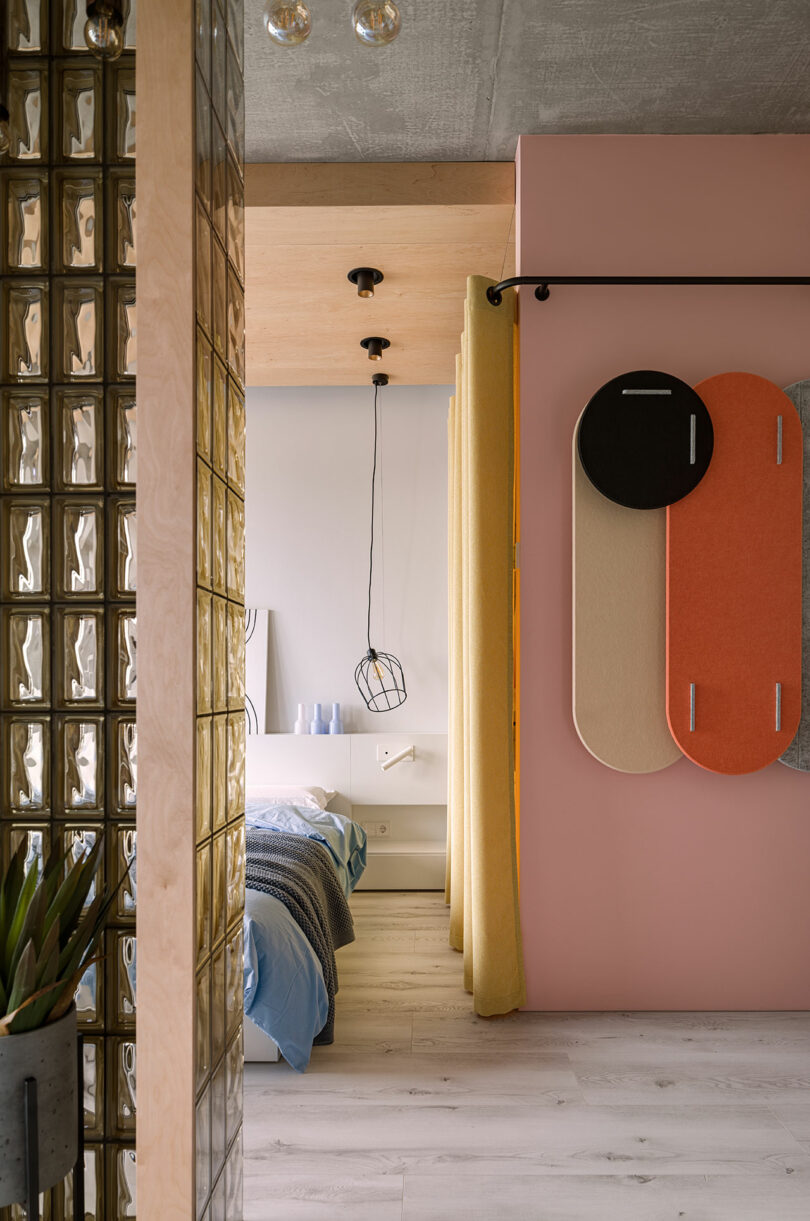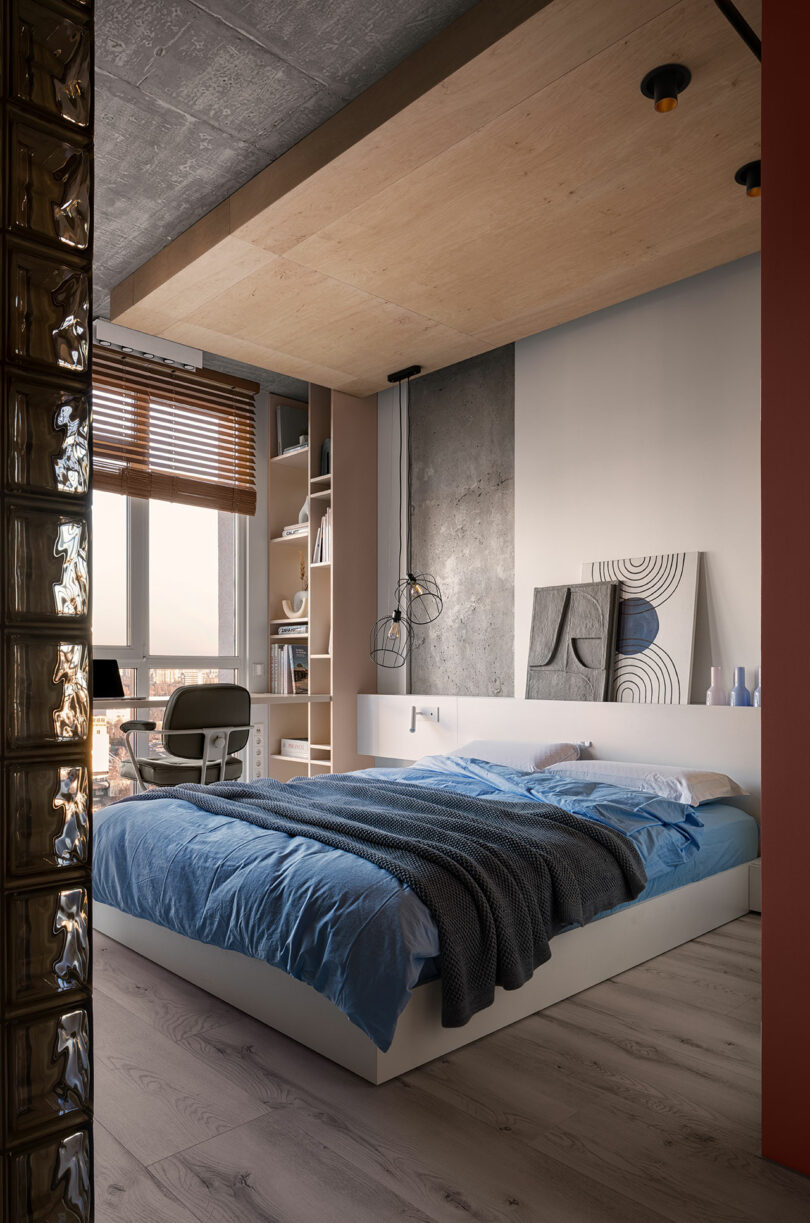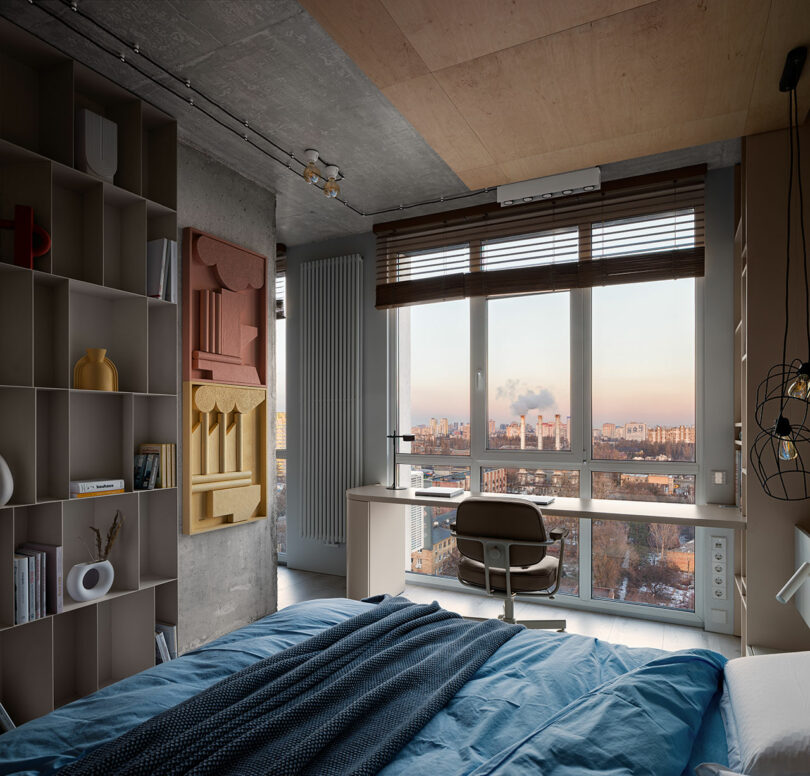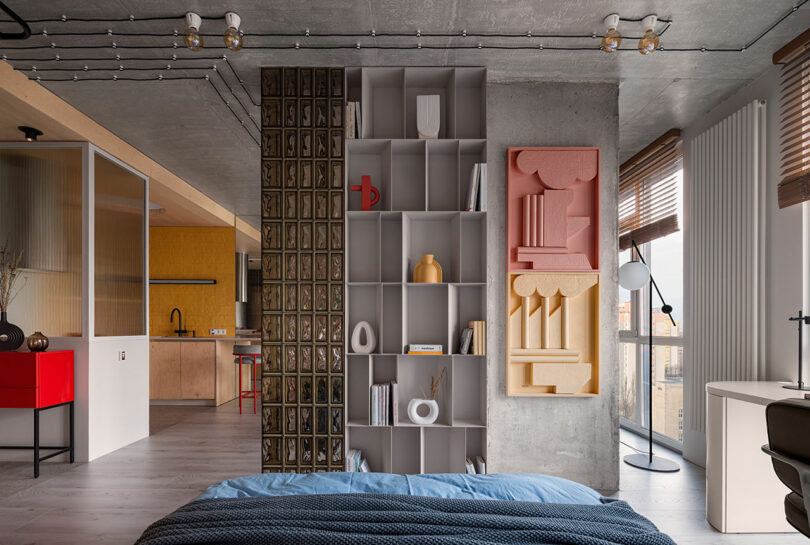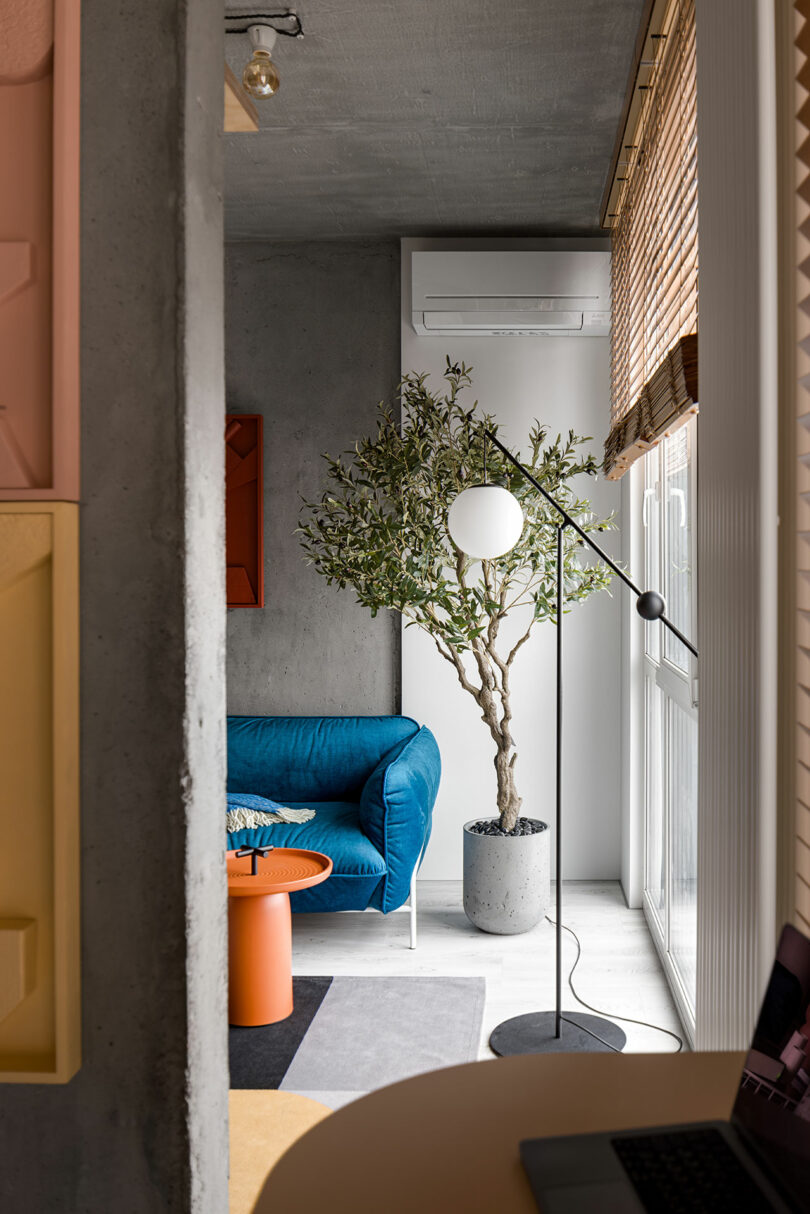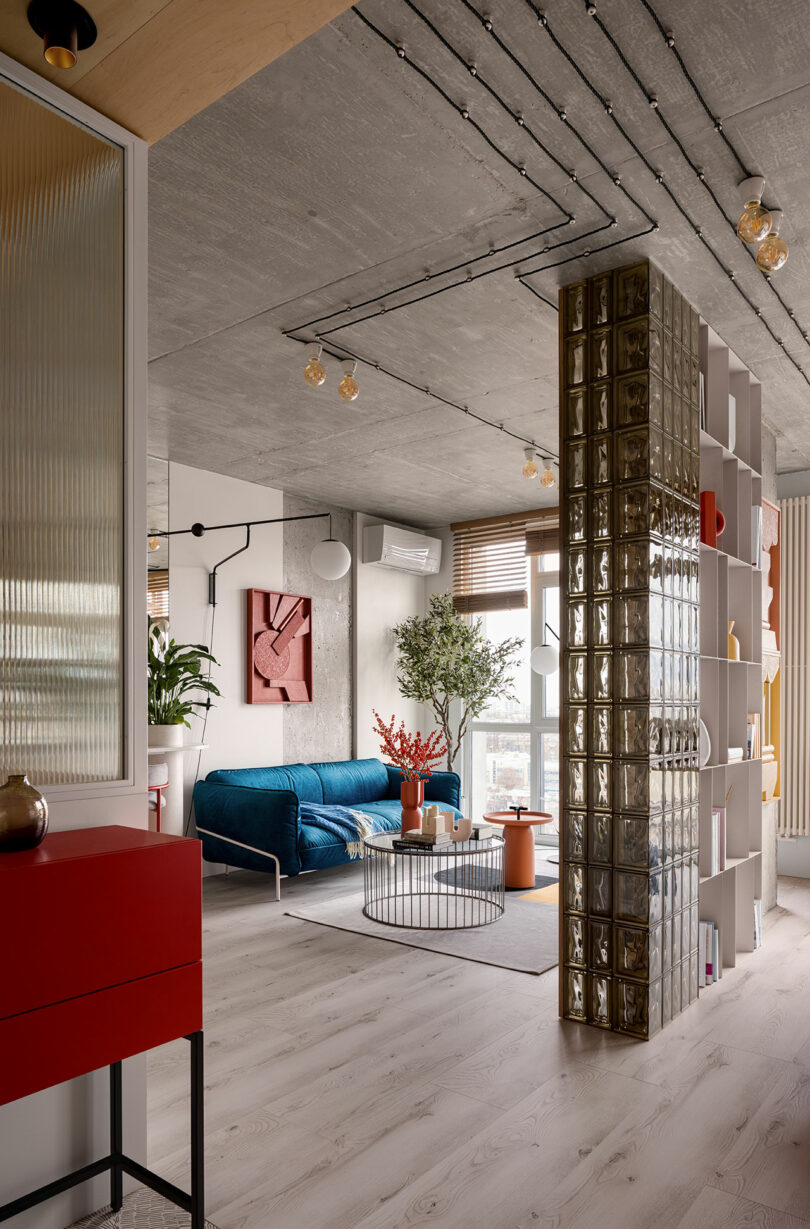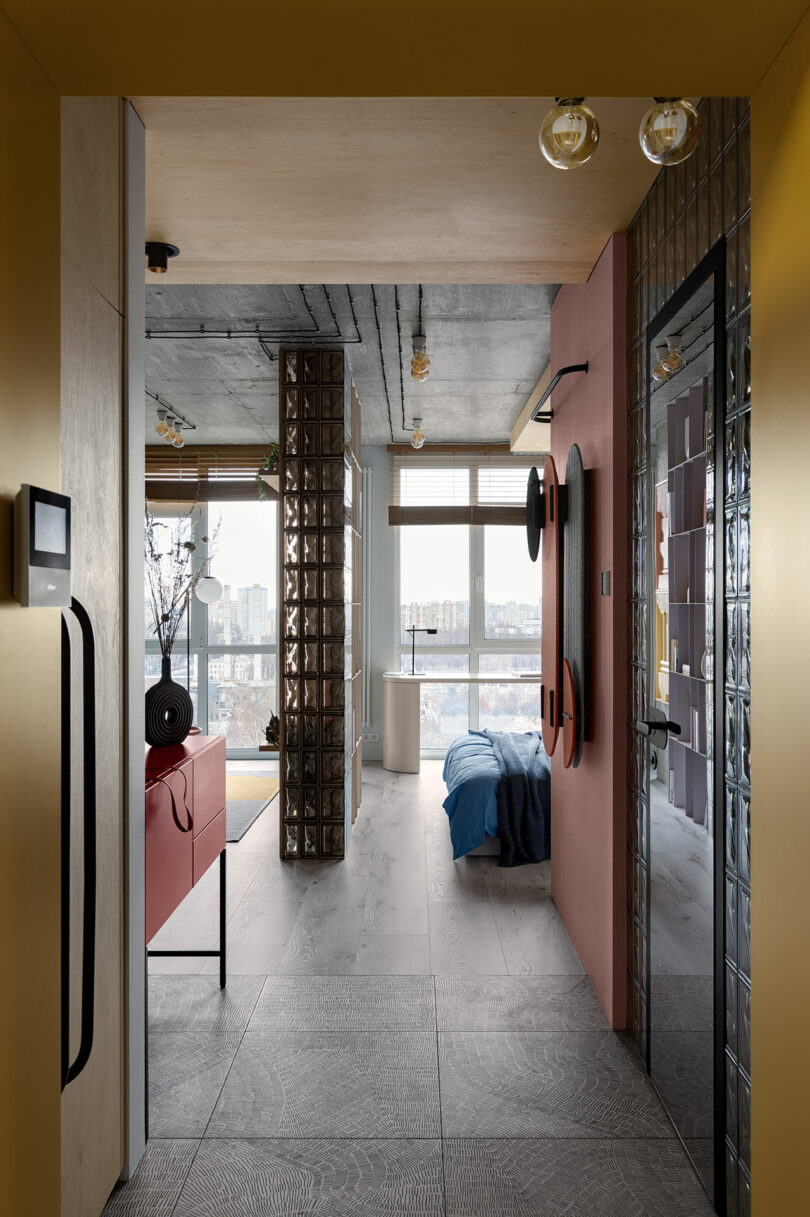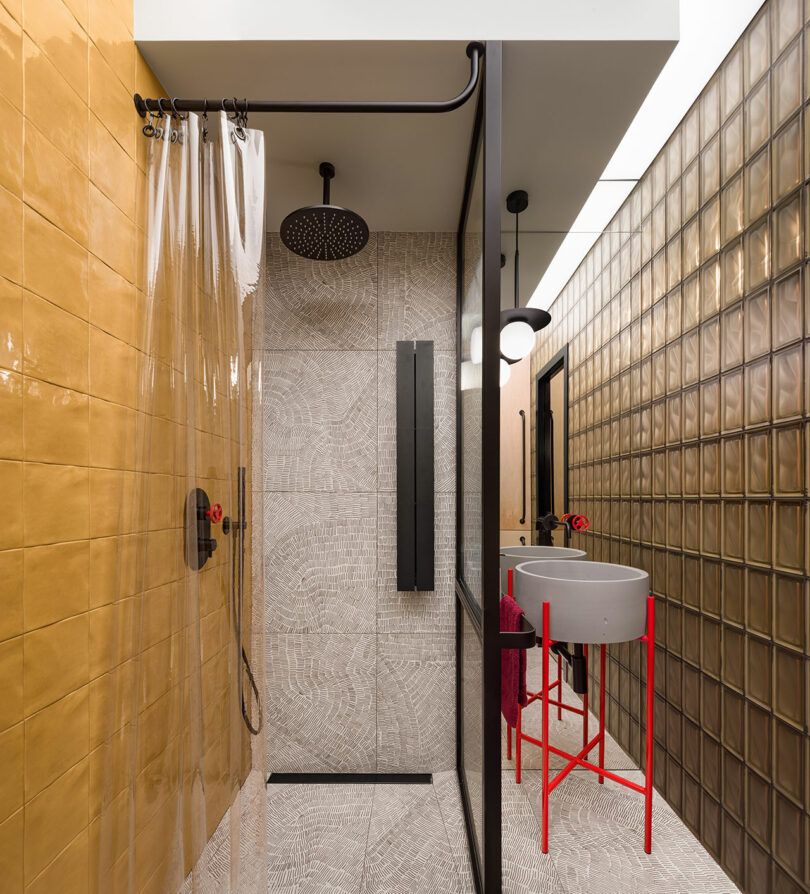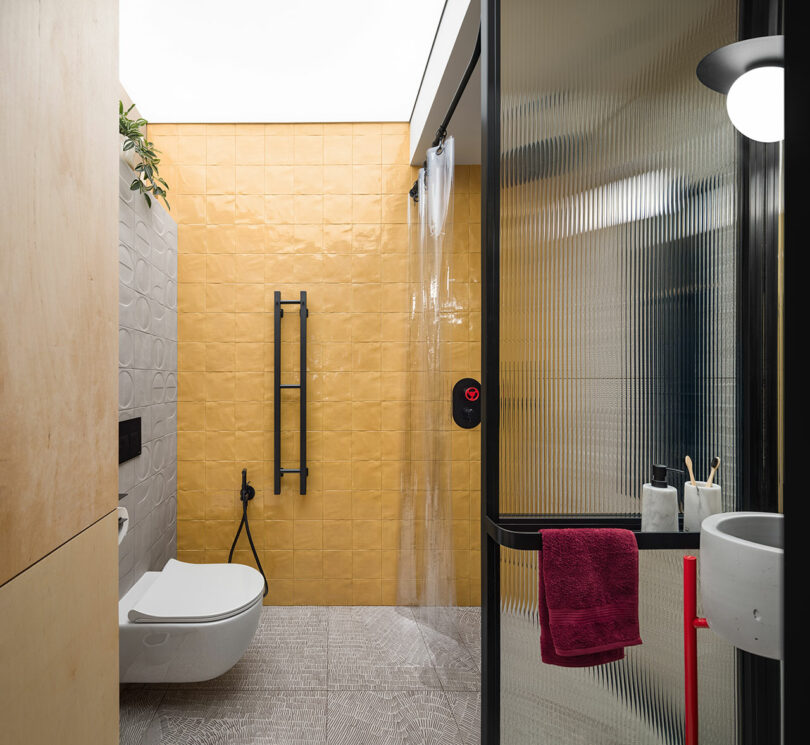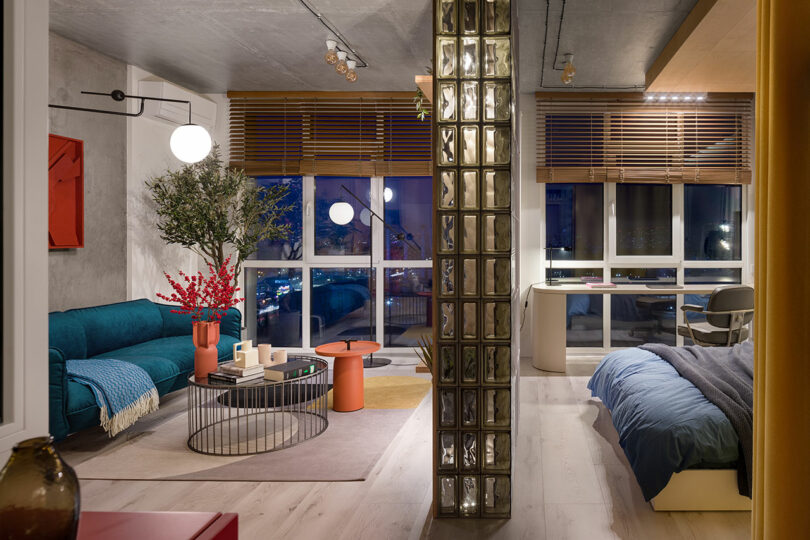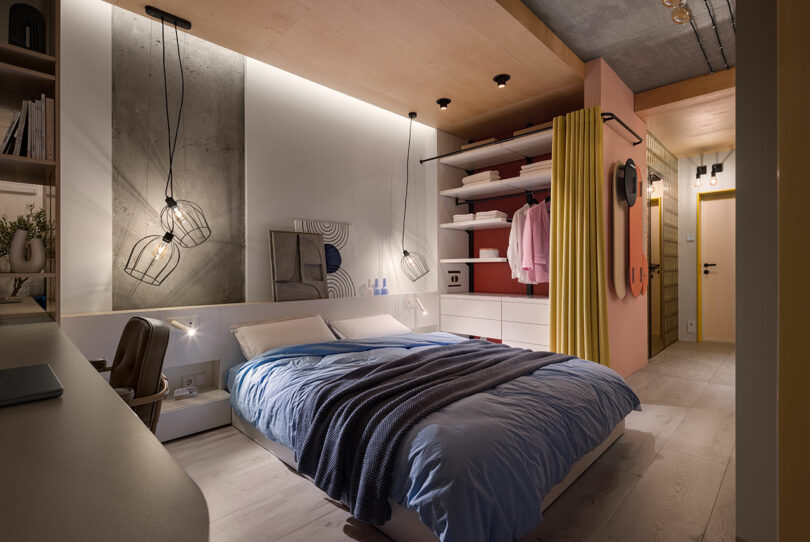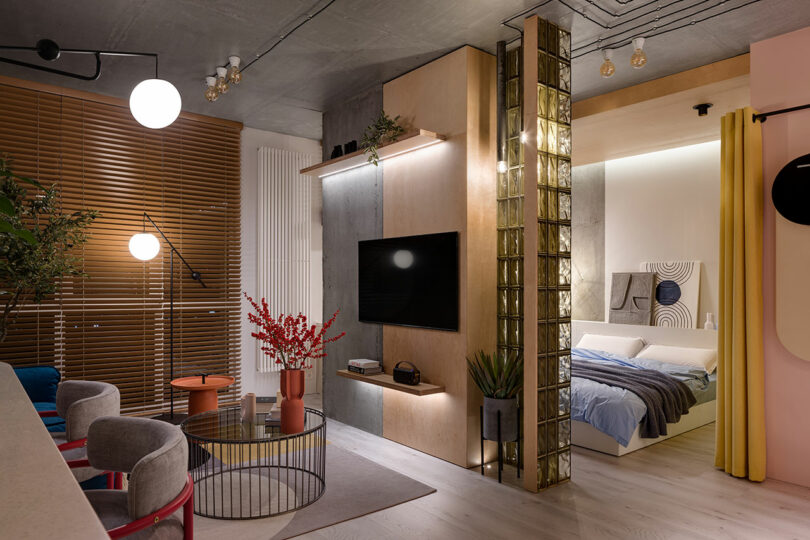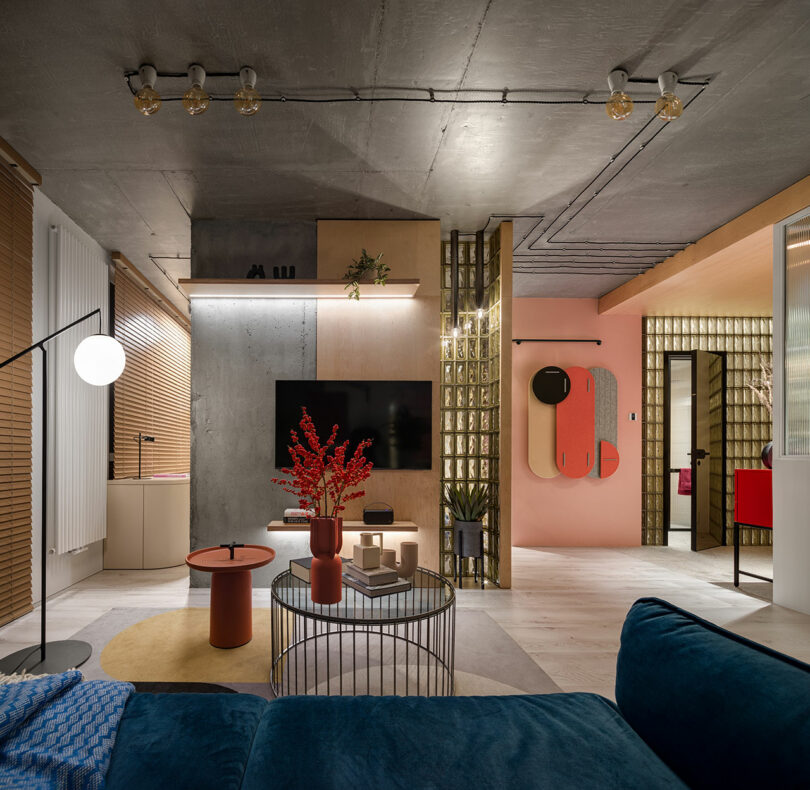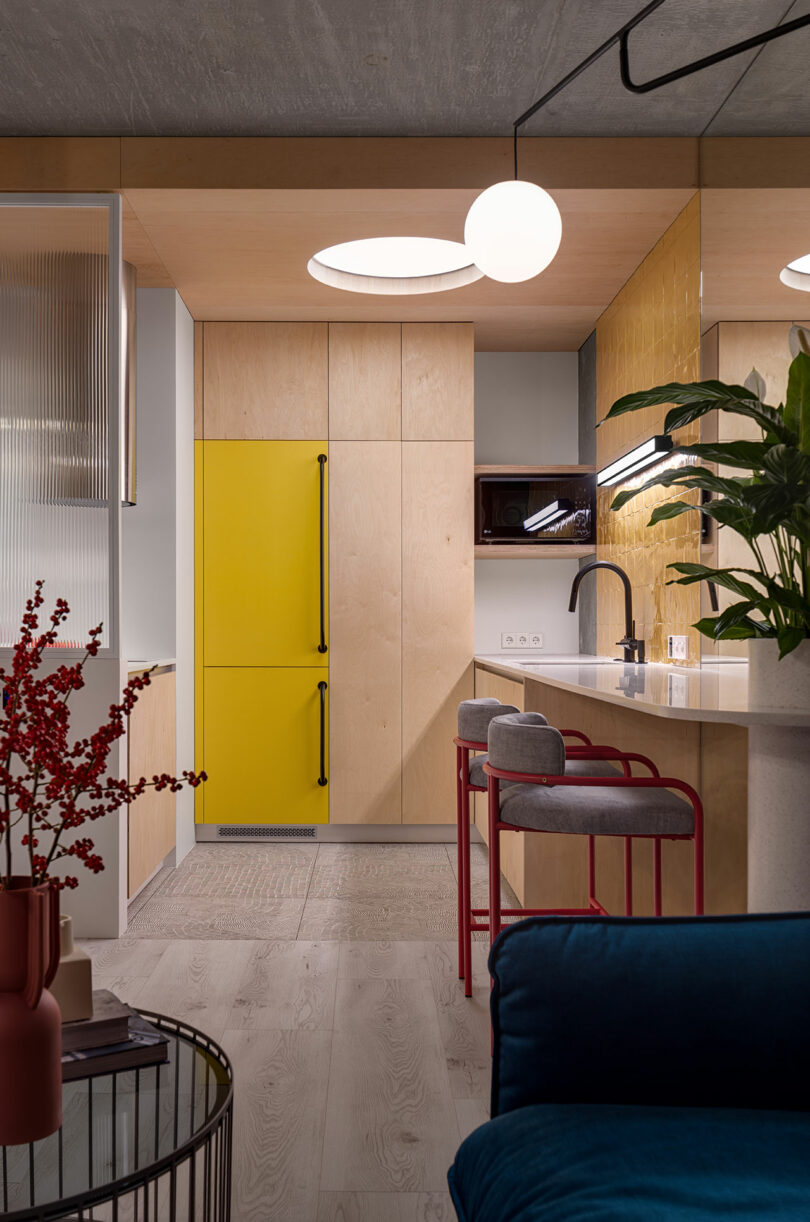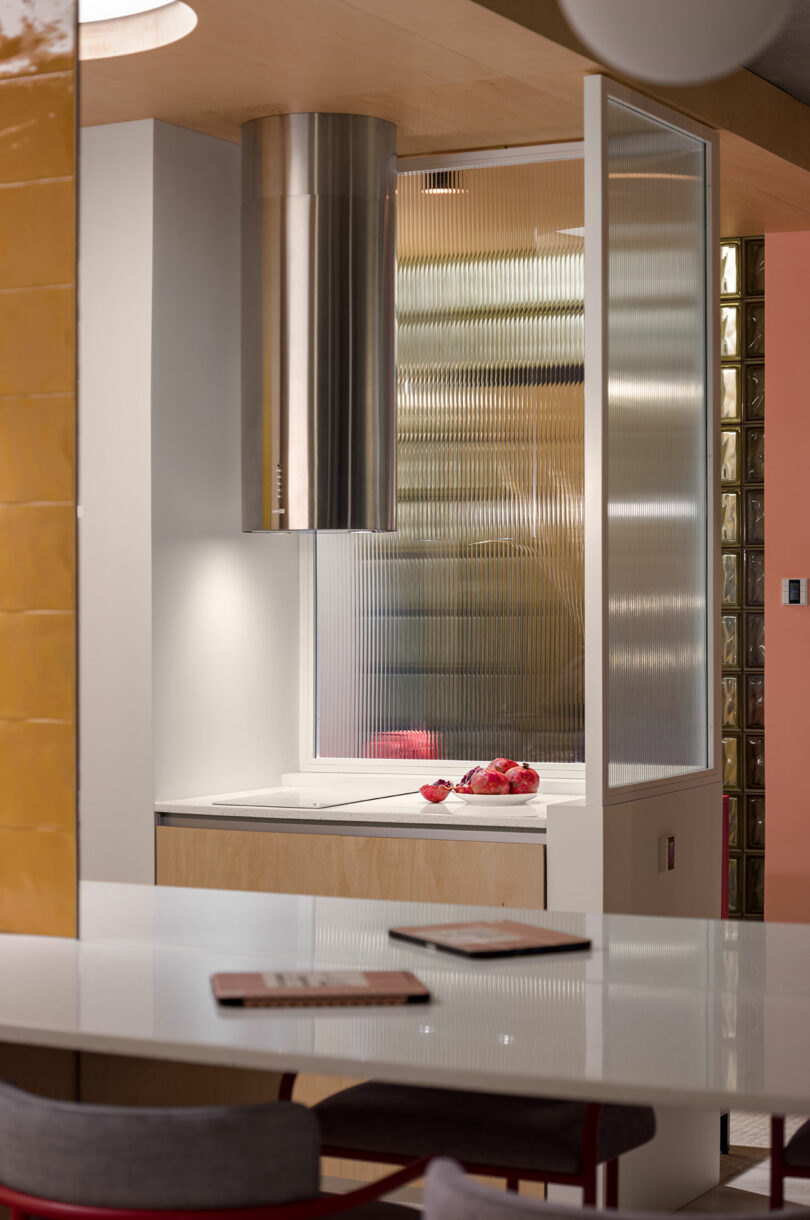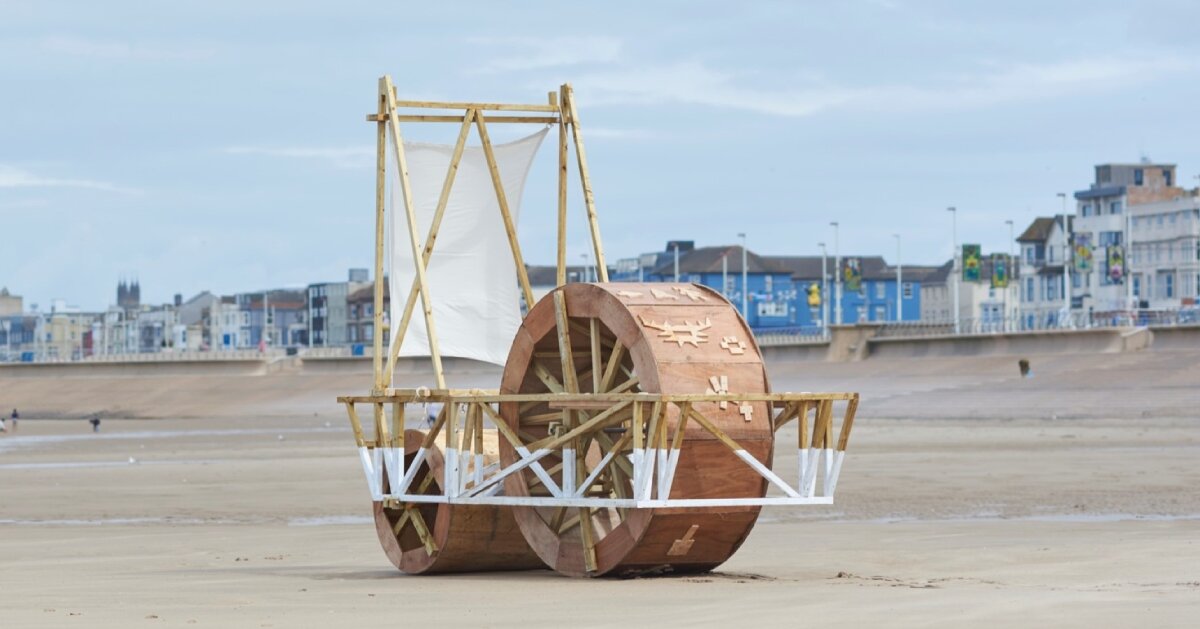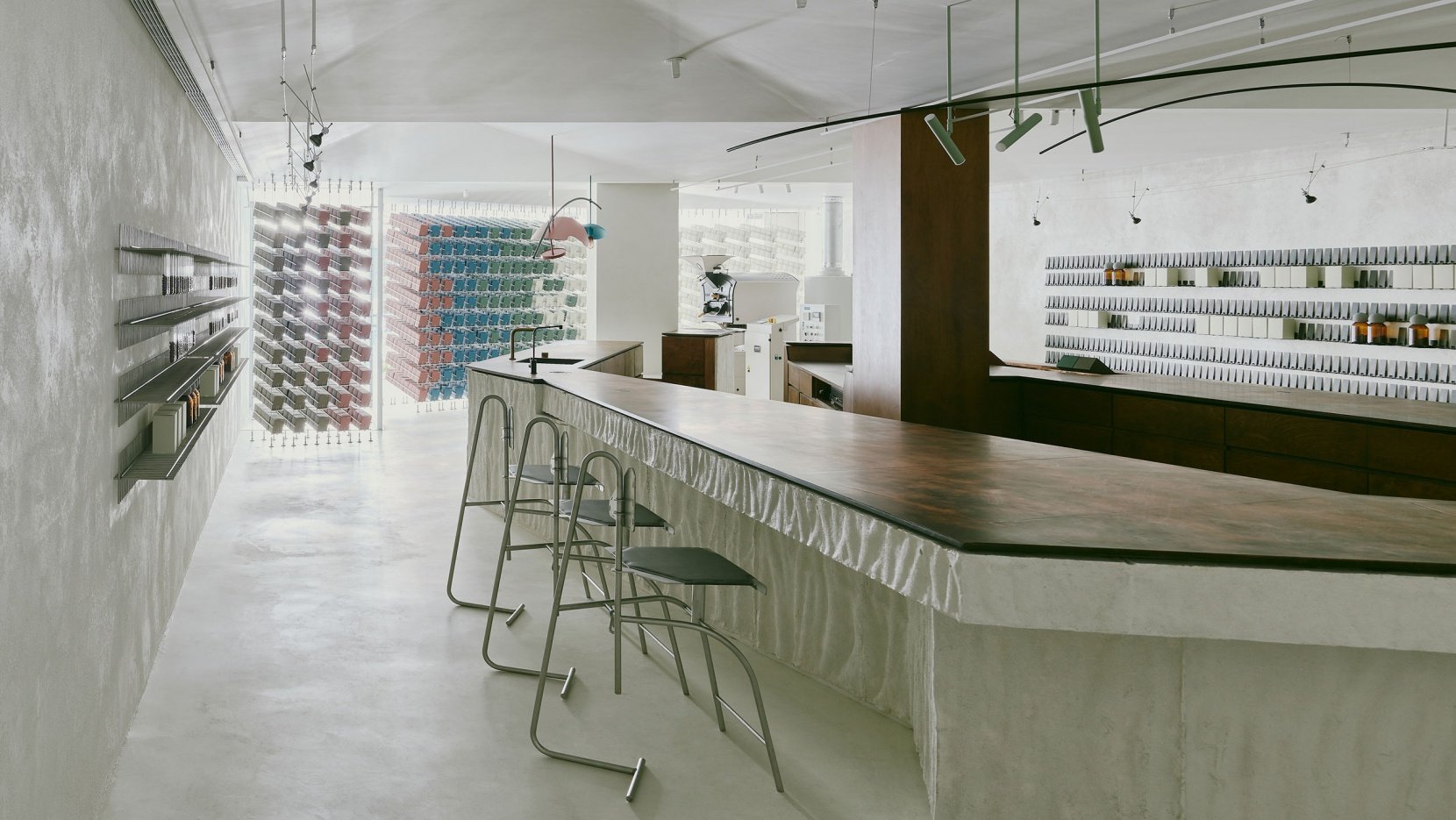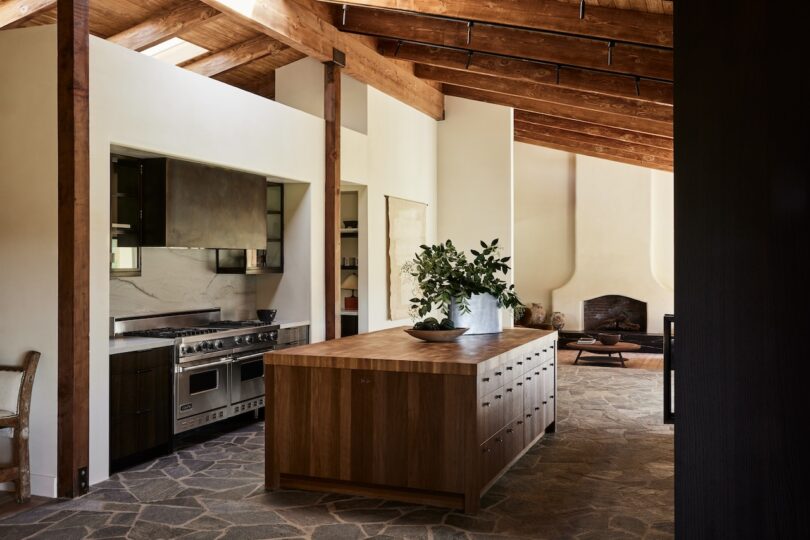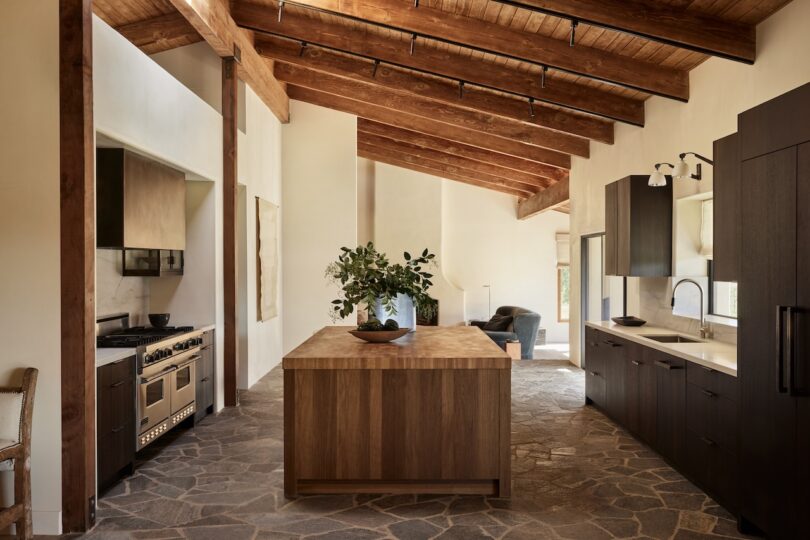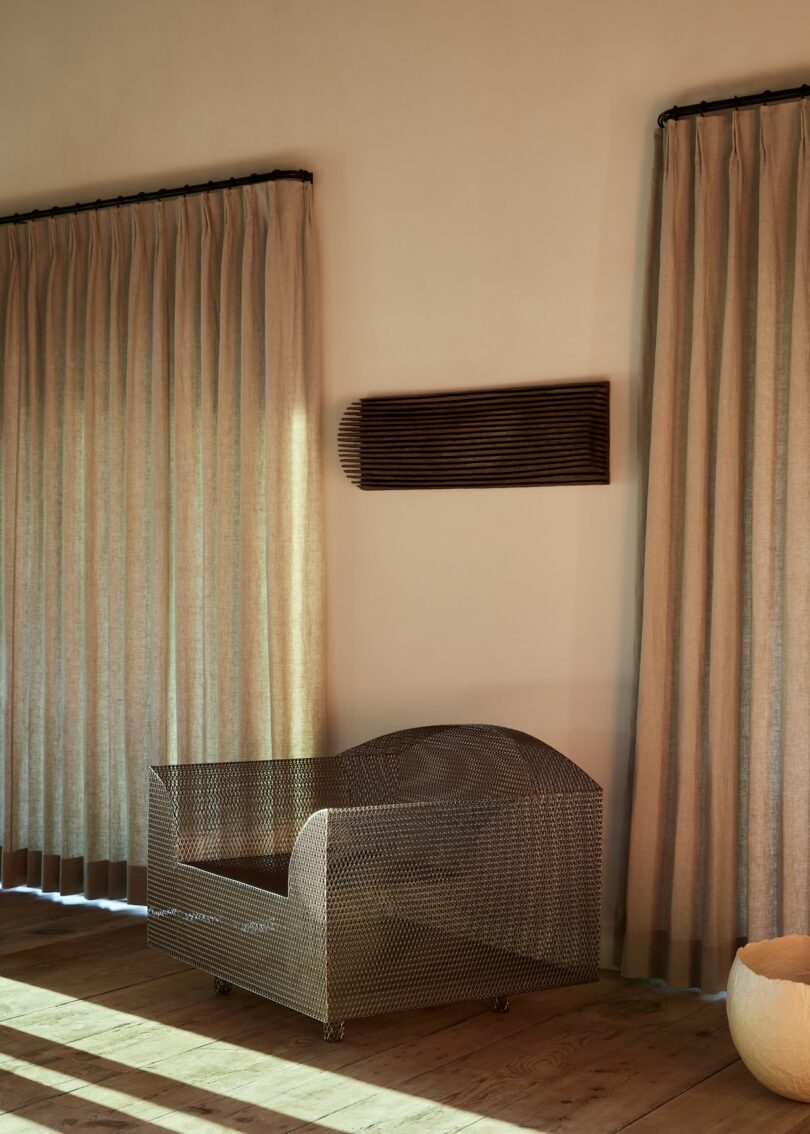Category: Design
Clandestina review – artists fighting fascists in Portugual in the 1950s – and the present day | Movies
[ad_1]
Anchored by the personal writings of 20th-century Portuguese revolutionary Margarida Tengarrinha, Maria Mire’s feature debut attempts to create a bridge between the history, the present and the future of political activism in Portugal. Told through voiceover, Tengarrinha’s extraordinary experiences describe an engaging relationship between crafts and activism. Along with her fellow members of the then-banned Communist party, she was forced into a clandestine existence for much of the 1950s. Out of a humble flat in Lisbon, Tengarrinha and her partner José Dias Coelho operated a secret forgery studio. Having studied art, both used their finely tuned skills to produce fake passports for their persecuted comrades on the run.
As the past is resurrected on a sonic level, Mire brings an intriguingly anachronistic approach to the visuals, which imagine the modern-day counterparts of Tengarrinha and her associates. When the voiceover speaks of employing lithography or engraving techniques, on screen we see young people working with laptops, smartphones and digital cameras. The film occasionally takes an even bigger experimental leap with stop-motion interludes that centre on 3D-imaging of different objects – a compass, a circuit board and more – which are seen floating against a cosmic background.
As with the rest of the film, these abstract sequences describe a lineage of political dissent, even if these modern-day reenactments stray on the side of simple decorativeness. Tengarrinha’s historical accounts are grounded in specific antifascist struggles, but the visuals are unmoored with few indications to what contemporary activists in Portugal are organising against. As a result, the onscreen activists are strangely entombed in abstraction, like rebels without a cause.
[ad_2]
Source link
dichroic glass collage by tereza šváchová wraps museum staircase in czech republic
[ad_1]
Tereza Šváchová presents the apparent presence
For The Apparent Presence, Tereza Šváchová wraps the edge facade of the Museum of Glass and Jewelry in Jablonec nad Nisou, Czech Republic, in a geometric collage with a dichroic effect. As the seasons change, and as observers move past the space or wait motionless, the glass lends an ever-evolving interplay of light and shade.
Pelant’s 1960s staircase, attached to the museum, is stylistically true and characterized by a monochrome white and a geometrically pure grid. The original blue-green mosaic, filling in the now blind parts of the grid, has been removed over time. Originally, the facade made an objectively beautiful first impression. On the second, however, it was somewhat bare. Any color intervention that implies a reinterpretation of an otherwise sovereign work is a bold one, so Šváchová’s new work retains the original boundaries and purposefully creates a dynamic contrast with the white background. ‘Like the sun at the first snow in the Jizera Mountains,’ says the Czech architect.
all images courtesy of Petr Polák
prismatic glass adds light to the geometric facade
‘Glass can have qualities beyond human experience. It manages to put both the observer and its creator in doubt, and in almost the same moment, in the conviction that it is exactly as present as it appears,’ she continues. The conceptual center of gravity of Tereza Šváchová’s design is a pane glass with a dichroic effect reacting to light, creating the impression of constant movement.
Five of the six treated parts are divided in a strictly orthogonal grid, and the individual panes of glass are systematically tilted towards each other, creating a vibrant dialogue of the shadowbox not only between themselves but also with their immediate surroundings. The largest of the surfaces remains seemingly empty, but over time it is filled with multitude prismatic reflections of triangular glass drawing a pastel image of the original Jizera Mountain fir trees towering over the typical peat bogs.
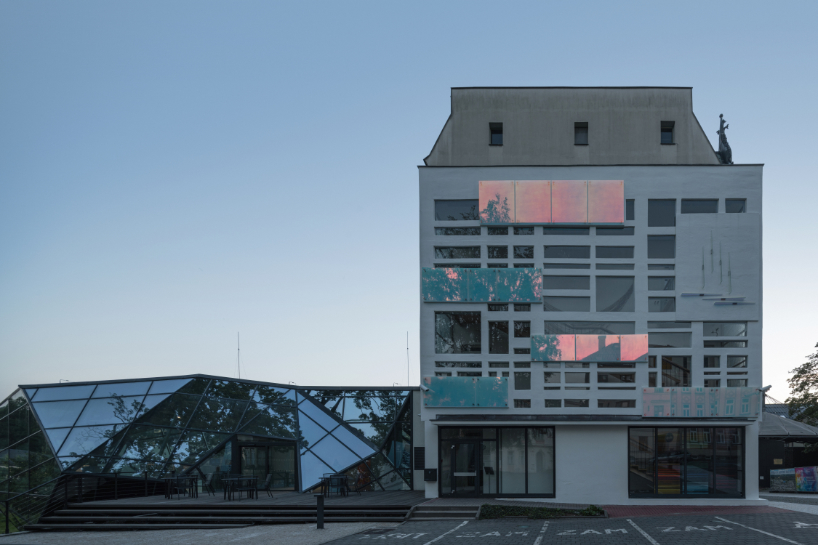
Tereza Šváchová presents The Apparent Presence
The point-anchored panes of glass are sandwiched with foil, thus safe and demountable for facade cleaning purposes. The dichroic layer further allows otherwise colorless glass to selectively reflect different wavelengths, depending on the angle of view and type of light beam, while transmitting others. It changes from a reflective golden mirror to a subtle veil reflecting almost imperceptibly subtle flashes of color, and the unexpected shadows inside the building create a welcoming a moment of surprise for visitors.
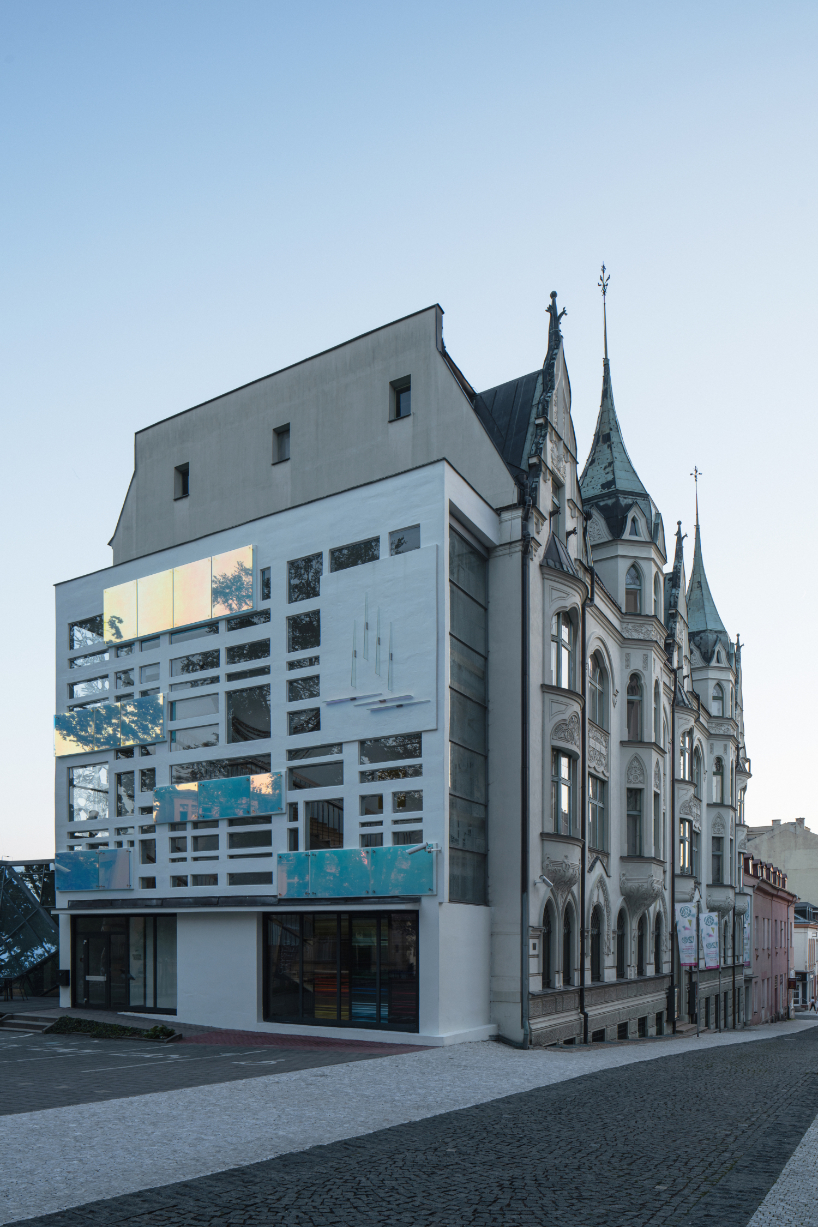
Pelant’s 1960s staircase sits at the edge of the Museum of Glass and Jewelry
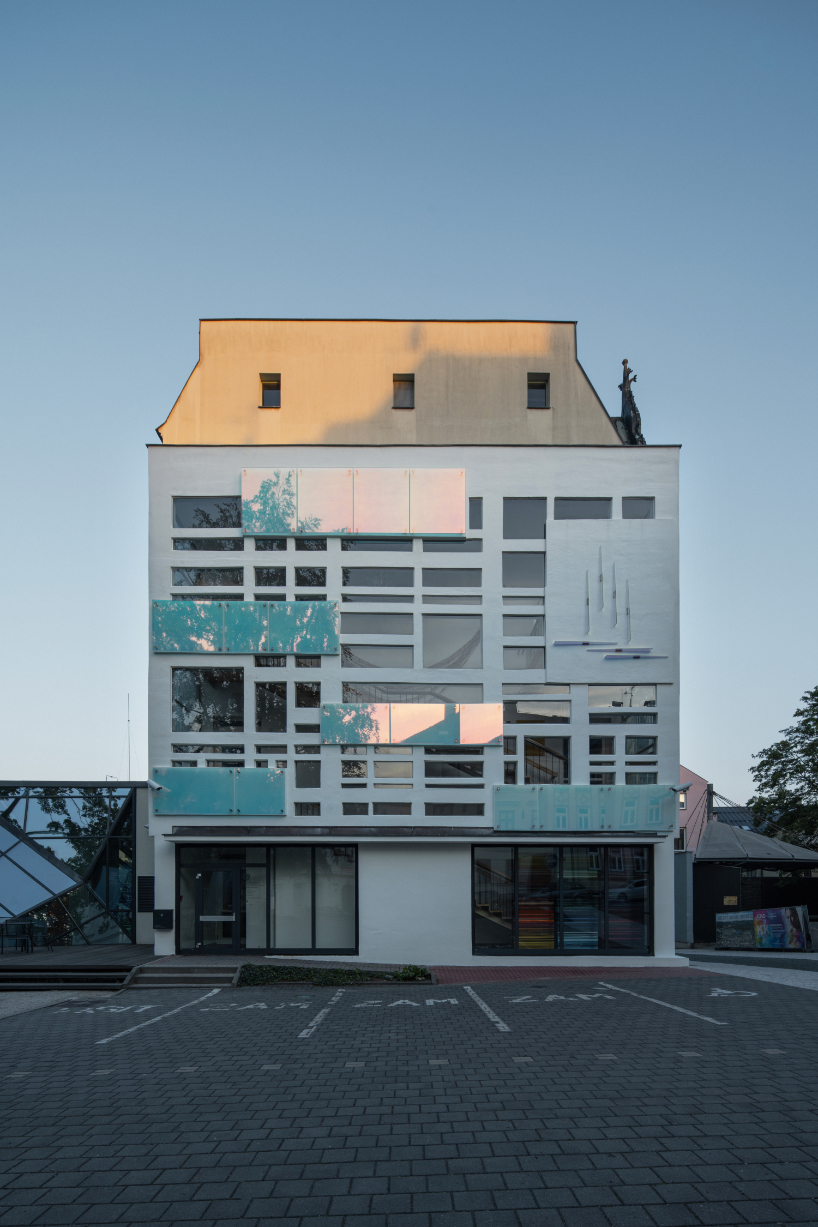
Tereza Šváchová creates a geometric collage with a dichroic effect
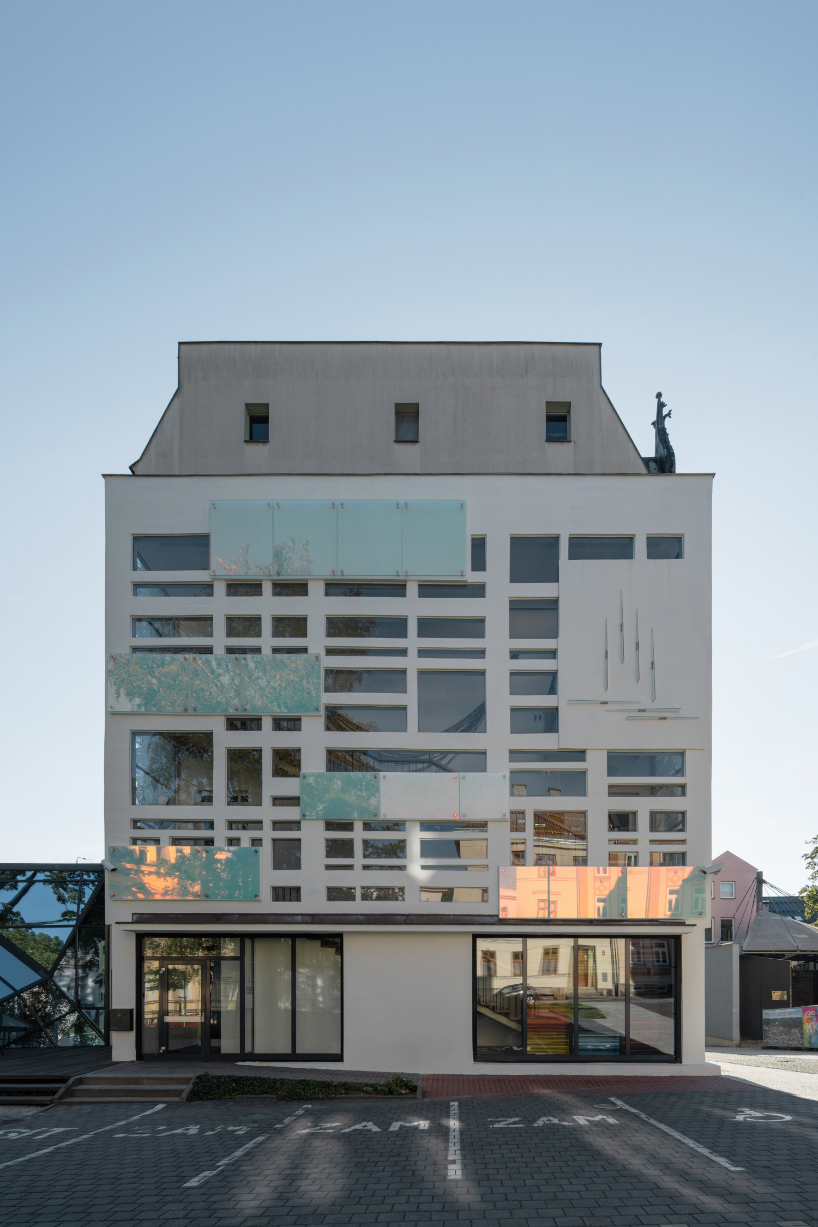
as seasons change, and as observers pass by, the glass lends an ever-evolving interplay of light and shade
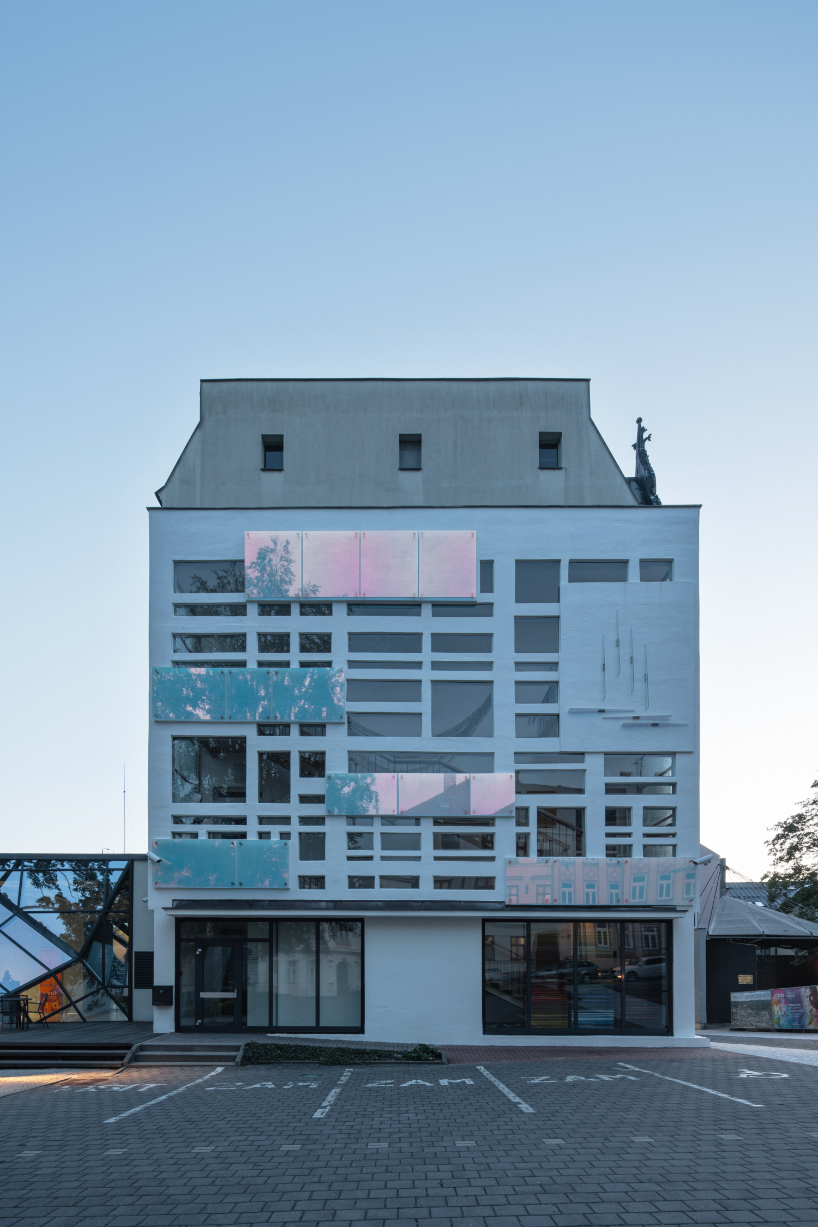
Tereza Šváchová’s intervention retains the original boundaries and purposefully creates a dynamic contrast
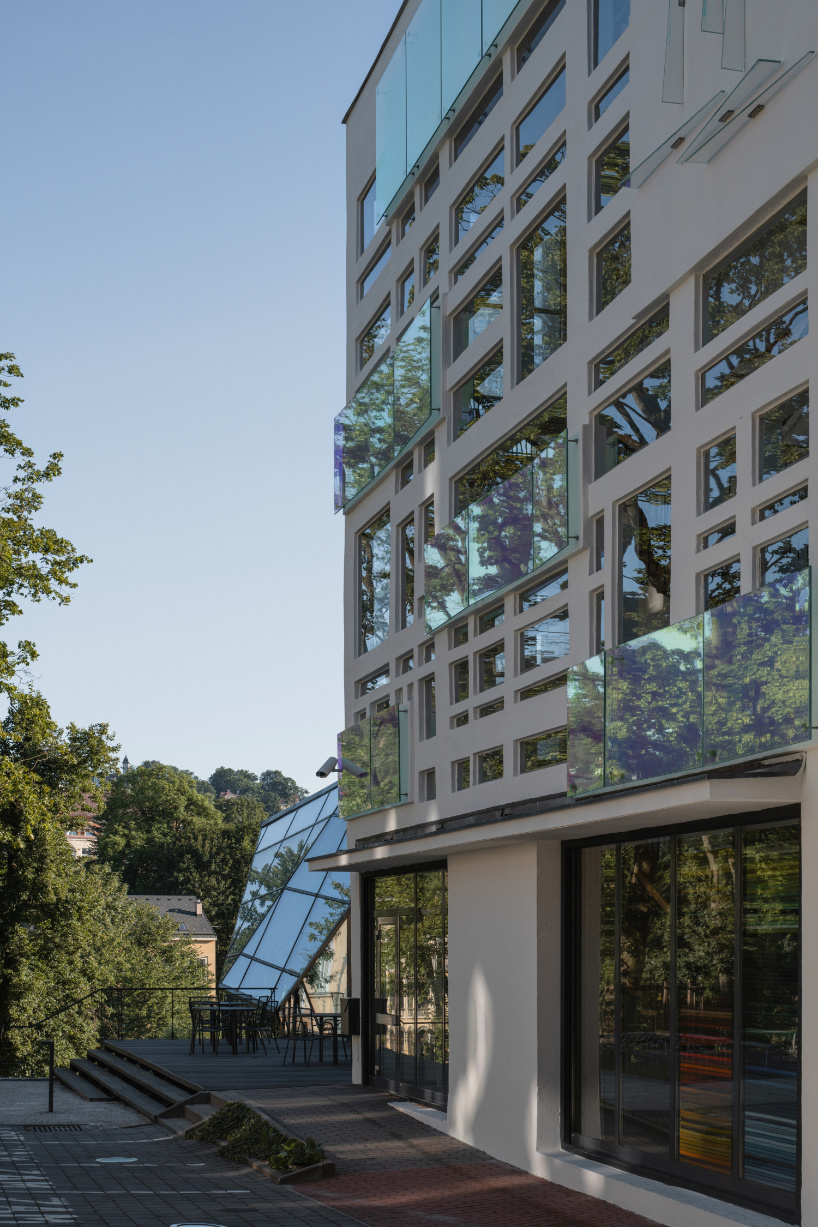
a geometrically pure grid defines the facade
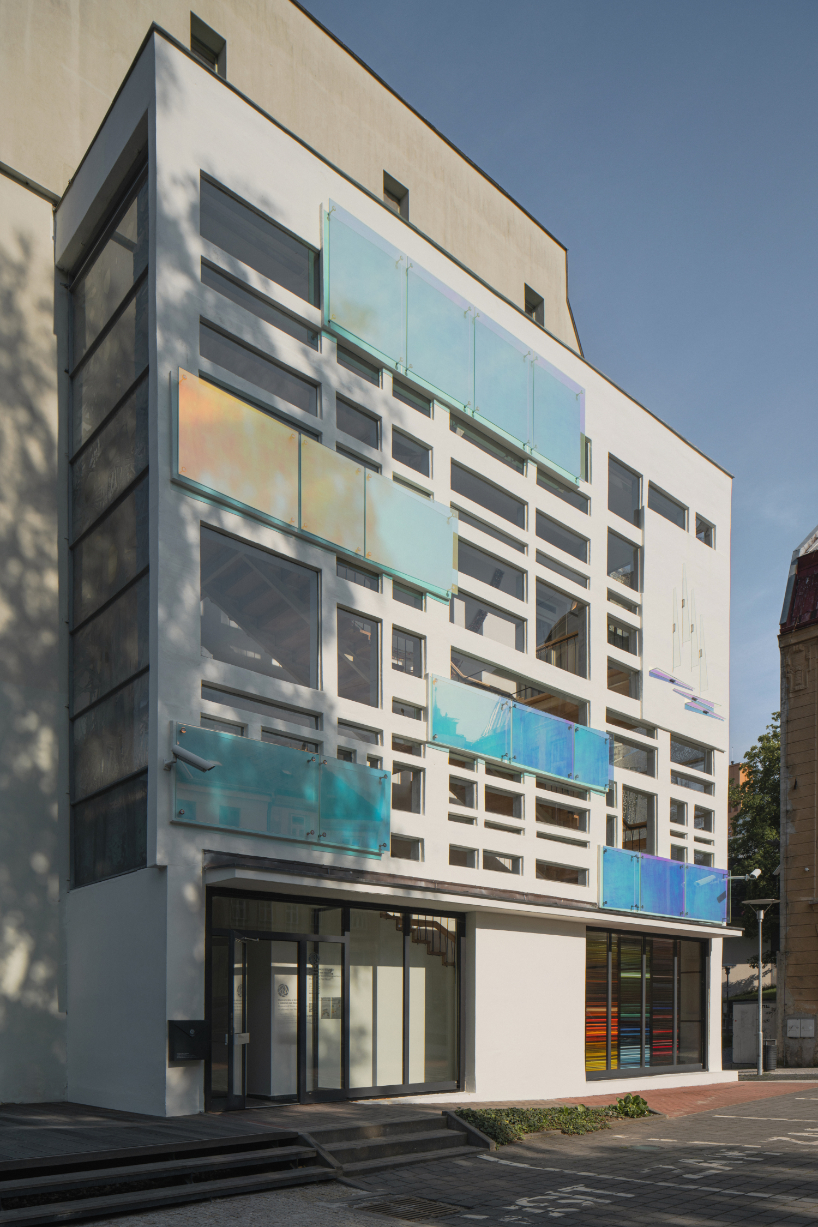
the point-anchored panes of glass are sandwiched with foil, thus safe and demountable for cleaning
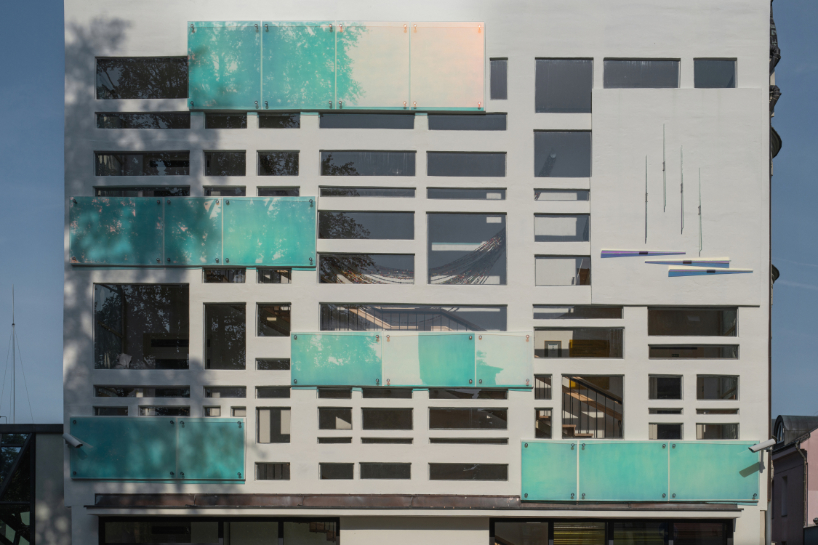
the largest of the surfaces remains seemingly empty, but over time it is filled with multitude prismatic reflections
[ad_2]
Source link
Kissmiklos Transforms a Public Restroom in Budapest into a Neo-Pop Art Gallery
[ad_1]
When we think of public art, we usually picture monumental sculptures, expansive murals and digital projections but what rarely comes to mind are public restrooms. Enter Hungarian designer and visual artist Miklós Kiss, a.k.a. kissmiklos, whose latest project, POP&ROLL Art Toilet, transforms the mundane experience of a public restroom into an immersive, phantasmagorical encounter. Located in the heart of Budapest, the Art Toilet fuses functionality with art and design, featuring 20 distinctive toilets that serve as a canvas for more than 100 of kissmiklos' artworks.
Inspired by the interiors of Budapest's Eastern European spas and swimming pools, and the gaming world of the 80s and 90s, the Art Toilet is whimsically designed down to the smallest detail in the artist’s signature Neo-pop aesthetic which kissmiklos describes as a "Gesamtkunstwerk", a total work of art. Swathed in vibrant candy hues and populated by a posse of cheeky figures, from pooping unicorns, rainbow-farting flying pigs, and peeing Teletubbies to the artist's signature “emograms” (smiley faces made up of jumbled letters that spell a word expressing an emotion, thought or concept), the space begs to be shared on IG stories and Tik Tok videos all the while poking fun at our social media-obsessed culture of curated perfection and instant gratification. Along with the adjoining Art Shop and Art Gallery, kissmiklos’ POP&ROLL project demonstrates that contemporary art can be insightful as much as fun.
[ad_2]
Source link
Modern Tribute to Ukrainian Avant-Garde
[ad_1]
On the 15th floor with sweeping views of Kyiv, the 452-square-foot Suprematism Apartment is now home to a young couple. Designed by Yevheniia Sytnyk of Dihome, the project draws inspiration from the Ukrainian avant-garde style, particularly the works of Kazimir Malevich, who is considered the founder of the Suprematism Movement.
The vision for the apartment was clear from the beginning: create a vibrant and efficient space for a young couple. “I wanted to “dress” the interior in a modern, bold way; to give it a young and relaxed theme. Excellent mutual understanding with the clients enabled me to implement this idea 100%,” shares Sytnik. This goal was achieved by incorporating modern materials and smart technology. The design process was guided by the principles of Suprematism, characterized by geometric shapes and vibrant colors, which are evident throughout the apartment. The decision to remove unnecessary walls created an open-plan layout that maximizes natural light, with the only separate space being the bathroom.
A main feature of the apartment is the use of glass blocks and textured glass panels. These elements serve both aesthetic and functional purposes, delineating spaces while allowing light to permeate. The living room and bathroom walls are adorned with glass blocks, while the bedroom and kitchen are separated by textured panels. This choice not only enhances the apartment’s visual appeal but also pays homage to the material’s historical significance in Ukrainian design.
The concrete pillar, a structural element of the building, is seamlessly integrated into the design, becoming a focal point around which the living spaces revolve. On the living room side, it houses a TV zone, and on the other, a shelving unit in the bedroom. This clever use of space ensures that every inch of the apartment is utilized efficiently.
One of the unique aspects of this project is the collaboration with Tasha Oro, a Kyiv-based artist who created three decorative panels specifically for the apartment. These panels, inspired by the urban landscape visible from the apartment’s panoramic windows, add a layer of depth and narrative to the interior. Oro’s use of recycled materials aligns with the overall ethos of the project, which emphasizes sustainability and ethical creation.
In the hallway, layers of acoustic panels made from recycled plastic bottles become a piece of geometric art that adds color while also serving as a sound absorber.
The apartment’s technological features are equally impressive. A “smart home” system allows remote control of essential functions such as heating, lighting, and even the refrigerator. The inclusion of an “anti-flood” system adds a layer of security in the “wet” ares of the interior, like the bathroom and kitchen.
Space-saving solutions are a key component of the design. The bedroom features a wardrobe hidden behind a sliding curtain, providing ample storage without occupying additional floor space. The dining table doubles as a work surface, further optimizing the apartment’s layout. A mirrored wall enhances the sense of space, making the interior feel much larger than its actual size.
Despite the compact nature of the apartment, the design ensures a comfortable and spacious living environment. The floor-to-ceiling windows offer views of the surrounding city, further expanding the sense of space. The choice of electric wooden blinds over heavy textiles maintains the apartment’s minimalist aesthetic while providing practical shading.
To check out more interior projects from Dihome, visit dihome.com.ua.
Photography by Andrey Avdeenko.
[ad_2]
Source link
‘Vulgar racism’: outrage after mural of Italian volleyball star is vandalised | Italy
[ad_1]
A mural celebrating the Italian Olympic volleyball champion Paola Egonu has become the target of “vulgar racism” after the athlete’s skin in the image was spray-painted pink.
The mural by the street artist Laika was defaced within a day of being unveiled on a wall close to the headquarters of the Italian Olympic committee (Coni) in Rome.
The image featured Egonu, who spearheaded Italian women’s volleyball’s first-ever gold medal win at the Paris Olympics, as she jumps to hit a ball with the words “stop racism”. The words were also erased by the vandals, who are yet to be identified.
Egonu, 25, was born in Italy to Nigerian parents.
Called Italianità, the mural was also Laika’s response to a passage in a bestselling book by a controversial army general and MEP, Roberto Vannacci, in which he wrote that even though Egonu was “Italian by citizenship … her physical features” did not “represent Italianness”.
Vannacci, who was elected to the European parliament in May with the backing of Italy’s far-right Lega, reiterated his view on Sunday after Egonu emerged as the top scorer in the women’s volleyball final against the USA.
The defacing of the mural was widely condemned by politicians from across the spectrum.
Antonio Tajani, Italy’s deputy prime minister, said: “I want to express solidarity with Paola Egonu and the most total disdain for this serious gesture of vulgar racism.”
Elly Schlein, the leader of the opposition Democratic party, said: “Racism is disgusting and must be countered.” She vowed to continue her party’s fight for a change in law that would grant citizenship at birth to children born in Italy to foreign parents, regardless of their parents’ citizenship, thus bringing the country into line with other European states. At present, children born in Italy to foreign parents can only apply from the age of 18.
Roberto Gualtieri, the mayor of Rome, said the vandalism was “a vile insult to a great Italian, who has brought the colours of our country to the top of the world, and to an artist committed to fighting against xenophobia”.
Simone Giannelli, a member of the Italian men’s volleyball team, said the vandals were “heartless, without dignity and without humanity”.
In 2022, Egonu took a break from the national team after receiving racial abuse online following Italy’s defeat to Brazil in the world championship semi-finals. “Reading those things and hearing them made me doubt myself more. And the worst one was, ‘Is she Italian?’ I was devastated,” she later said in an interview with Al Jazeera.
[ad_2]
Source link
futurefarmers’ wooden beachship rolls along blackpool coastline inviting collaboration
[ad_1]
futurefarmers encourages collaboration and interaction
The Beachship is a ten-day public art installation created by team La Fortuna of international artist constellation Futurefarmers that rolls along the coastline in Blackpool, UK. The project facilitates a collaborative narrative among locals, visitors, and nature, blending imagination to resolve underlying conflicts. Following its initial voyage, this event will continue in the beach city as an ongoing ecological and social initiative, reinforcing community connections and offering a shared vision for the future.
all images by Gary Cook unless stated otherwise
beachship brings people together in the tourist city of blackpool
Beachship was commissioned by Blackpool’s Leftcoast Gallery, and realized by Albert Fuster, Masao Rong, Runyu Li, and Vivian Rustige of design studio Futurefarmers. Through co-building, installations, designed tools, costumes, and workshops, the team created a dynamic stage where participants adopt various roles to shape a narrative, turning the entire experience into a performance. It encourages future-oriented imagination through a deep connection with nature, renewing the bond between residents and the beach.
Blackpool is a tourist city in North England known as a coast resort for the British. From the 1960s, the rise of overseas holidays and lack of investment lead to a long-term economic decrease, causing a series of social issues. The tourist industry in Blackpool has created a wave that distances communities, hindering locals’ ability to enjoy and discuss natural spaces, and fostering narrative tension between different groups. Residents, tourists, refugees, and other groups need find ways to redefine their identities to foster cooperation. Addressing this, Beachship is a community-centric initiative that sparks collaboration, interaction, and joy along the coast.
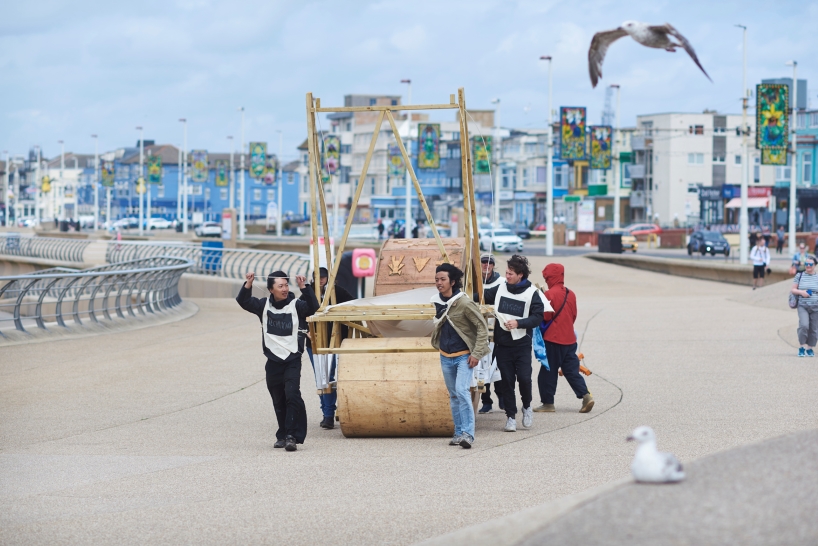
Futurefarmers’ wooden Beachship rolls along Blackpool coastline
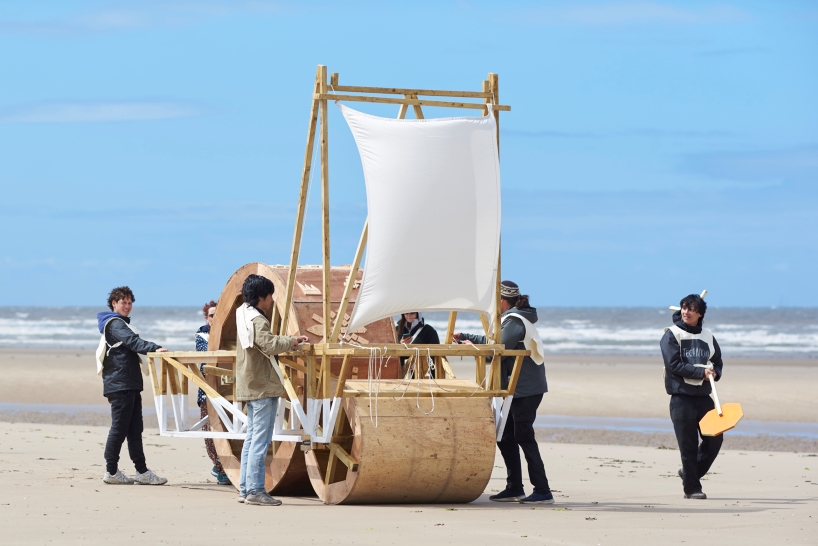
created by team La Fortuna of international artist constellation Futurefarmers
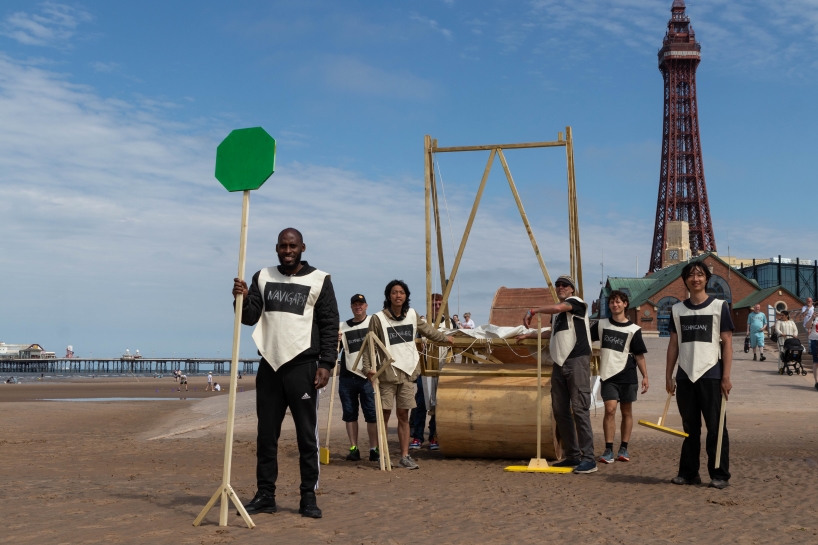
the project facilitates a collaborative narrative among locals, visitors, and nature | image by Donna Hannigan
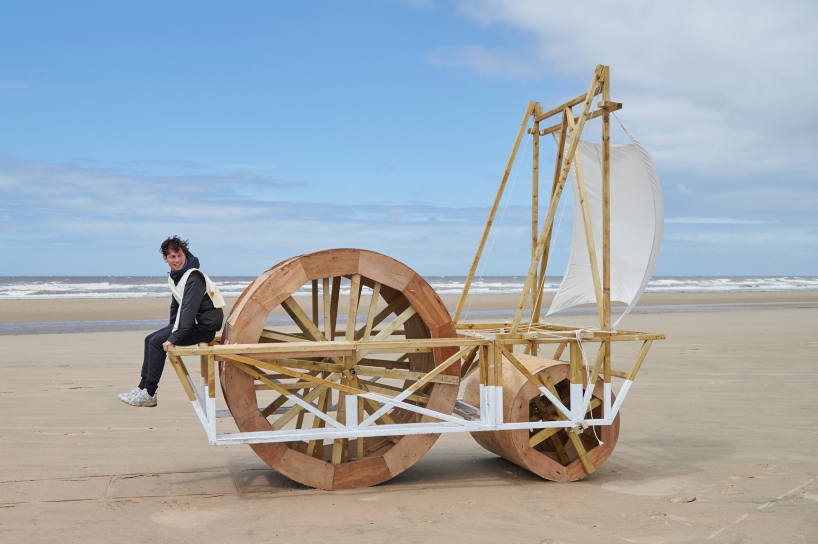
a ten-day public art installation
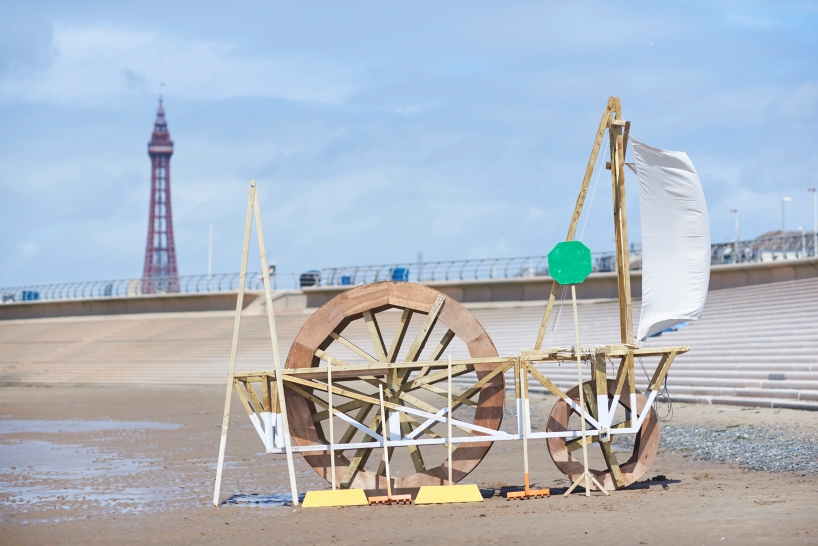
the event runs in Blackpool, a tourist city in North England known as a coast resort for the British
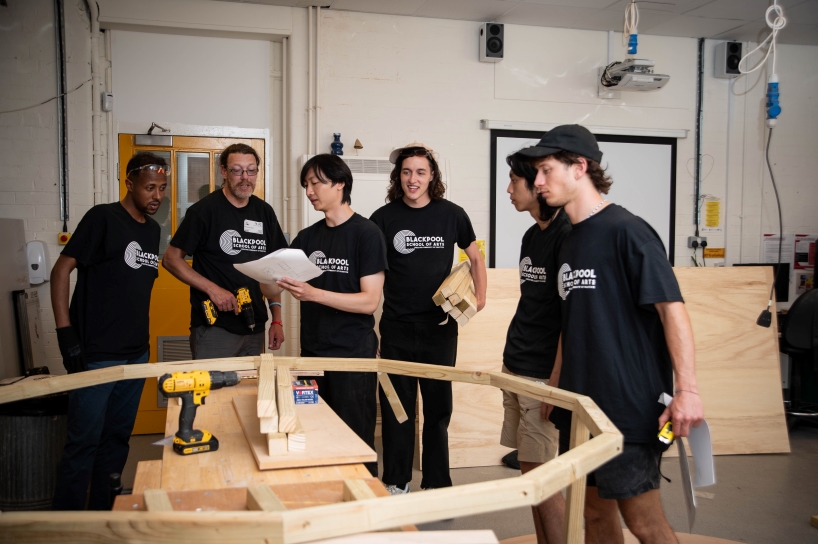
the initiative sparks collaboration, interaction, and joy along the coast | image by Claire Griffiths

image by Claire Griffiths
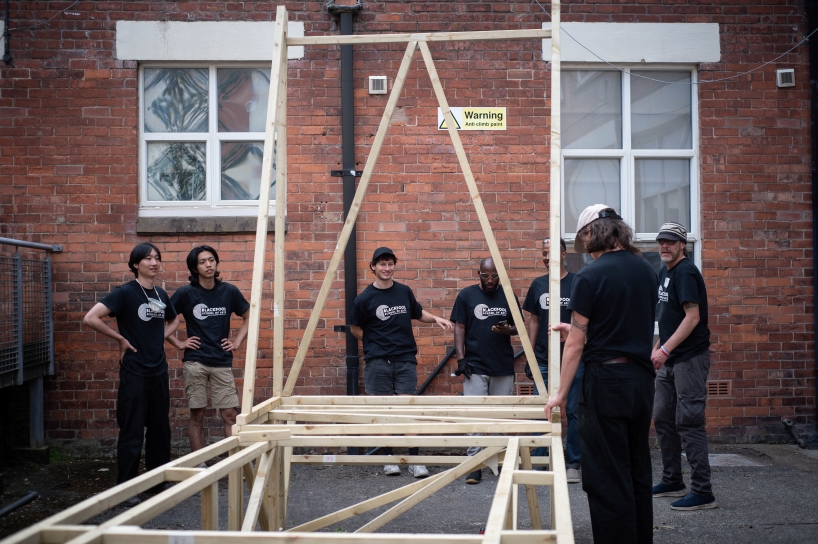
image by Claire Griffiths
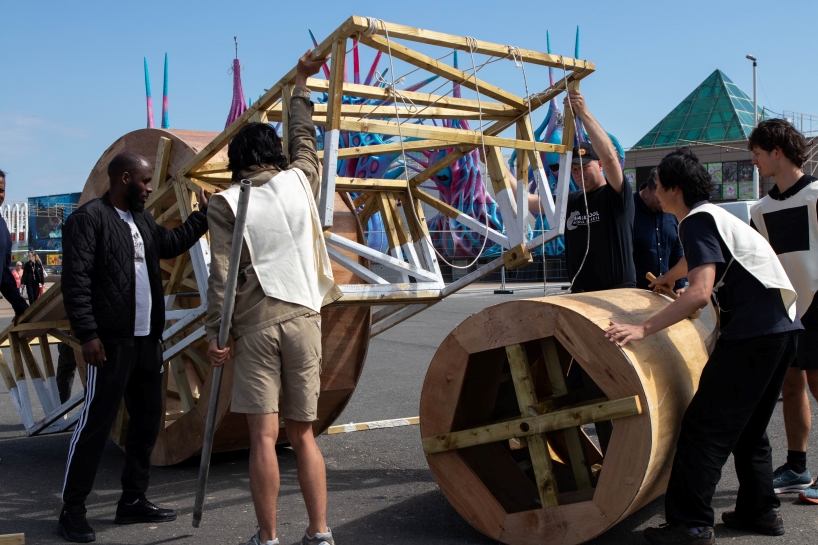
image by Donna Hannigan
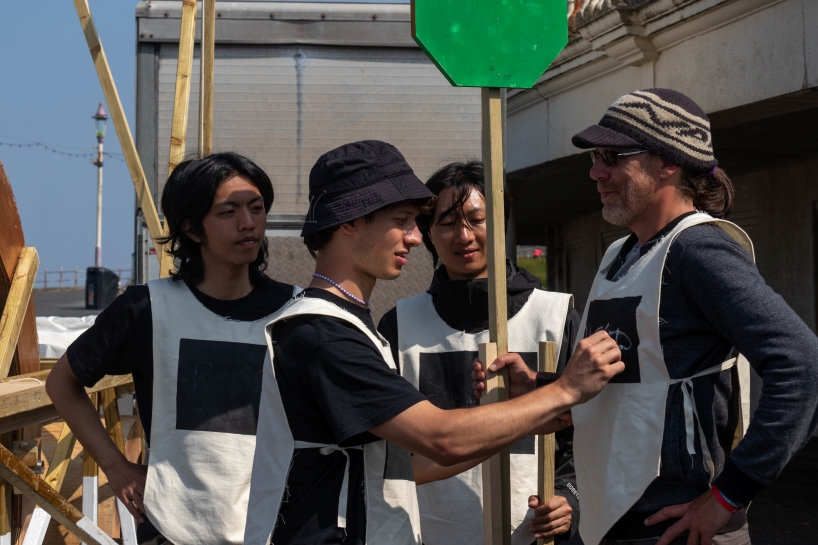
image by Donna Hannigan
[embed]https://www.youtube.com/watch?v=2Uk1cSwg5Hk[/embed]

image by Donna Hannigan
project info:
name: Beachship
designer: La Fortuna
design team: Albert Fuster, Masao Rong, Runyu Li, Vivian Rustige
location: Blackpool, United Kingdom
designboom has received this project from our DIY submissions feature, where we welcome our readers to submit their own work for publication. see more project submissions from our readers here.
edited by: ravail khan | designboom
[ad_2]
Source link
Minimalist Design Meets Sensory Richness in a Specialty Coffee Shop in Taiwan
[ad_1]
Set back four meters from the street to accommodate an outdoor sitting area under the shade of a towering six-meter-high banyan tree, the store’s façade is dominated by a kaleidoscopic window display that catches the attention of passers-by. Supported by floor-to-ceiling metal wires, the almost incorporeal, matrix-like structure features shelving where the roastery’s boxed coffee beans are displayed. Stacked according to colour, representing the coffee beans’ origin and flavour, the boxes form a colourful geometric tapestry. Slightly tilted inward towards the interior, when customers remove a product from the shelves, the remaining boxes slide forward, subtly changing the window display’s morphology. This dynamic display not only serves as an eye-catching focal point but also reflects customers’ preferences and the store's foot traffic while also functioning as a screen between the exterior and interior, playfully filtering natural light throughout the day.
[ad_2]
Source link
Corinne Mathern Curates Iconic Pieces in Santa Ynez Valley Home
[ad_1]
The art of collecting often goes beyond the collection itself, with equal investment in maintenance, staging, and labels. For iconic furniture pieces, the display then becomes the environment surrounding those artifacts. Corinne Mathern took this exact initiative, orchestrating spaces that orbit around each cherished acquisition. The existing assemblage of distinguished designs served not as mere furnishings, but as the cornerstone of her design ethos, informing every compositional decision in this Santa Ynez Ranch Home.
Set in the heart of wine country, the structure is surrounded by acres of vineyards, olive trees, and even horses and emus. Originally built in the 1980s, the ranch-style homestead features a charming horizontal layout, embracing the expansive beauty of its rural surroundings.
Spanning 3,500 square feet on a single level, the home includes three bedrooms, as well as three and a half bathrooms. True to its ranch-style roots, the open kitchen, dining, living, and family room form the heart of the residence, creating a welcoming and cohesive living area. Throughout the house, handmade finishes and artistry are evident in the refinished pine floors, new solid oak doors, plastered walls, and leathered stone surfaces.
The interior features a harmonious blend of natural wood, subdued cream plaster, and moody black stones, ushering in a modern aesthetic. This thoughtfully designed space serves as the full-time home for the sons of winery owners and avid art collectors who have a passion for travel.
“The clients brought great inspiration and were highly collaborative. Their existing collection of objects and their passion for creating a home that was layered with history, stories and a collected feel was easy inspiration for us,” says Mathern. “Our client also had designed multiple pieces throughout the home that we loved and were so inspired by. The lamp next to the blue Michael Taylor sofa and the coffee table in the living room were his, among other pieces throughout the home. I felt the ‘spark’ that I do with a client and a home when I know it’s a project that my team and I are the best fit for and can make come to life.”
To learn more about the designer and her work visit corinnemathern.com.
Photography by Nicole Franzen.
[ad_2]
Source link
‘My first thought was to have the whole thing be a swimming pool’: the basement refurb that optimised space to the max | Interiors
[ad_1]
Excavation in modern architecture has a bad rap these day, but when furniture designer James Shaw bought a mini plot of land close to Columbia Road flower market in east London, he realised he would have to build down if he wanted to turn it into a home.
The result, developed with architect Nicholas Ashby, is an extension of James’s experimental, colourful product design – and an example of how to make even the most awkwardly sized plot stylish.
“The space had been vacant since 1860,” says James, who shares the house with his partner, the curator and author Lou Stoppard, their one-year-old daughter Clark and cat Rupert. “It came with serious planning issues. A new house here couldn’t block any light to the existing adjacent ones, and anything visible above ground had to look like the rest of the row – a handsome Victorian terrace. I was the only bidder. It’s a tiny plot, and to create rooms we had to go right up to every edge – each wall here is the end of a neighbour’s garden.”
The result? A yard, bedroom and minuscule hallway at ground level, then a curved staircase leading to a basement lounge, kitchen, bathroom and – incredibly – a small open space and an even smaller pool.
Economy of space has been used as an advantage: instead of a sofa, built-in seating tailored to an odd corner shape maximises the lounge, as does Shaw’s eye for colour. The interior is full of his creations: the bedposts are topped by surreal pears made of colourful extruded, recycled plastic. The bright palette extends to a pale blue Corian kitchen island that, Lou says, “brings the colour of the sky into a space where you can’t actually see it”, and a curved handrail along the staircase that Shaw made in situ.
Other elements in the house make it a work of art in its own right. “Nicholas called me at 6am one morning during construction,” he says. “They were casting the concrete for the kitchen ceiling, and he wanted to set something in it. We decided on an old iPhone 5. So, there it is, fixed for ever – a weird black mirror that will date the house to the particular moment when it was put into the concrete.”
Lou and James weren’t together when the house was first designed, but their relationship shaped the way it looks today. Lou has brought her curatorial eye to the art on the walls, including paintings by John Sheehy and Guendalina Cerruti, and they plan to tweak the layout to give Clark her own bedroom space.
The couple intend to keep the double-height aspect of the basement but extend the floor space above it to create a second bedroom. There’ll be chaos, they say, but the worst of the construction is behind them and it hasn’t been financially ruinous – many of the best aspects of the decor involve recycling found or inexpensive materials. The mosaic bathroom floor is made out of tile samples, which channels the graphic style of textile artist Anni Albers, and kitchen and bedroom wall surfaces are engineered wood. They have also made a feature of the raw breeze blocks and plaster throughout.
“It took a very long time to do all this,” says Shaw. “The planning process was two and a half years in itself. And the build took much longer than expected.” It was five years from discovering the plot to moving in, with lots of issues to negotiate with neighbours’ boundary walls. Stoppard says: “There was a point at which I said, ‘This has to be a home now, not a building site – I want all the tools put away at the end of every day’.”
Still, in a way, it’s the slow progress of the project that has allowed the space to grow with this new family. Its original concept didn’t accommodate a lounge, let alone a baby. “My first thought was to have the whole thing be a swimming pool, with balconies above it that you could inhabit,” says Shaw. There’s still a brilliant folly, in the shape of a plunge pool in the outdoor basement terrace. “It’s not heated yet,” he says, “but we’ll fix that when we work on the rest. And, of course, we need to make it child-proof. But it was one of the first things I knew I wanted here. I would still have loved a full-sized pool. I really love swimming.”
[ad_2]
Source link
iconic footwear parts form kinetic sculpture to celebrate breakdancing’s olympic debut
[ad_1]
1520: Lazerian’s Sculptural Tribute to Breakdancing at Selfridges
Lazerian creative studio introduces 1520, a sculptural piece by Liam Hopkins and Daren Newman, part of the Sportopia campaign celebrating breakdancing’s Olympic debut. Showcased at Selfridges Manchester, the sculpture is inspired by the movement and energy of breakdancing, and features an avian form with ethereal wings, symbolizing the fluidity and spontaneity of the dance.
Anchored by a manhole-like base, the sculpture reflects the urban roots of breakdancing, linking the streets of New York City and Manchester. Brass jet-like bars rise from the base, representing dynamic energy and forward momentum, supporting the avian form. The avian figure, crafted from Jesmonite and suede, nods to iconic breakdancing footwear such as the Adidas shell toe and Puma suede shoes. The use of Jesmonite for the shell toes captures intricate details and ensures durability, while the suede wings, laminated for strength and laser-cut for precision, enhance the sculpture’s aesthetic and functional properties.
all images by Gunner Gu Photography
1520 fuses contemporary sculpture with street culture
Through 1520, Lazerian’s Liam Hopkins in collaboration with designer Daren Newman fuse contemporary artistry with cultural homage, celebrating the vibrant roots of hip-hop and breakdancing. The kinetic nature of the artwork ensures the sculpture is in perpetual motion, mimicking the fluid movements of breakdancers and embodying their defiance of gravity. The design pays tribute to 1520 Sedgwick Avenue in The Bronx, NYC, the birthplace of hip-hop, and channels the raw energy of street culture. As part of the Sportopia campaign, 1520 will be on display at Selfridges Manchester throughout the Olympics, offering viewers a dynamic and culturally rich experience. The open wings of the avian form sway with the breeze, creating a sense of movement and life within the sculpture.
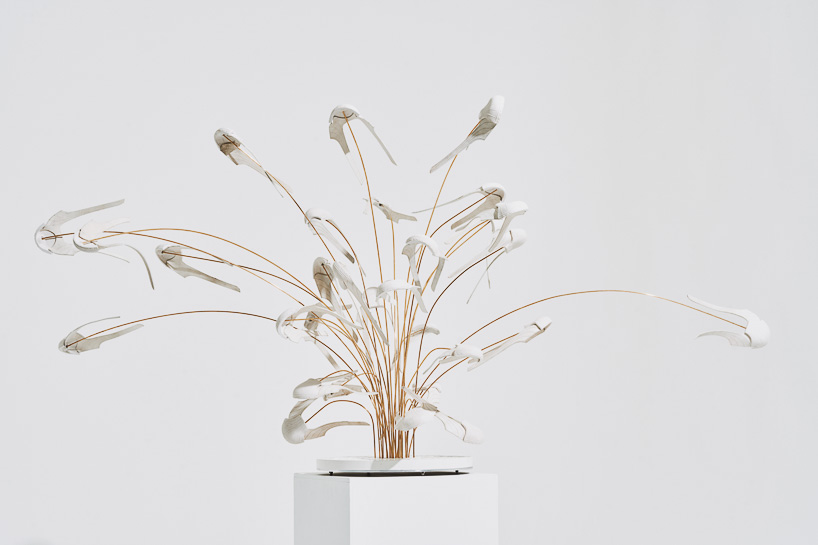
1520 by Lazerian, celebrates breakdancing’s Olympic debut at Selfridges Manchester
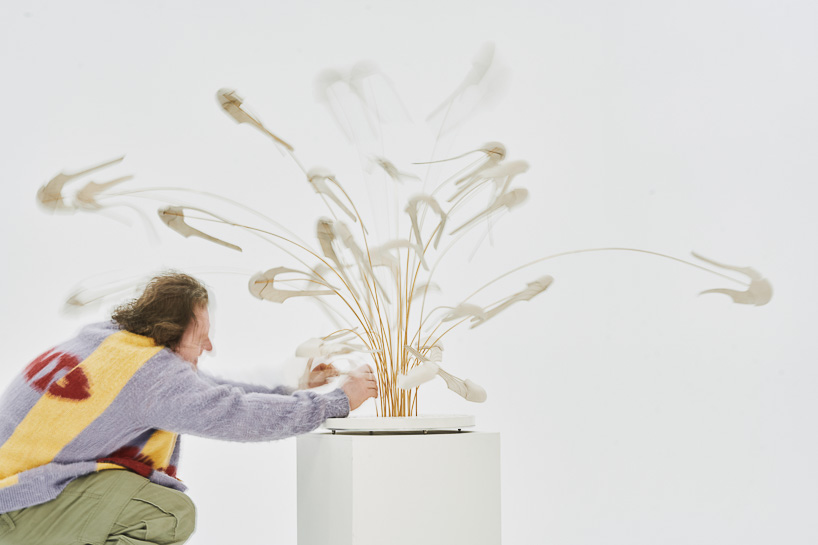
the sculpture’s avian form symbolizes the fluidity and spontaneity of breakdancing
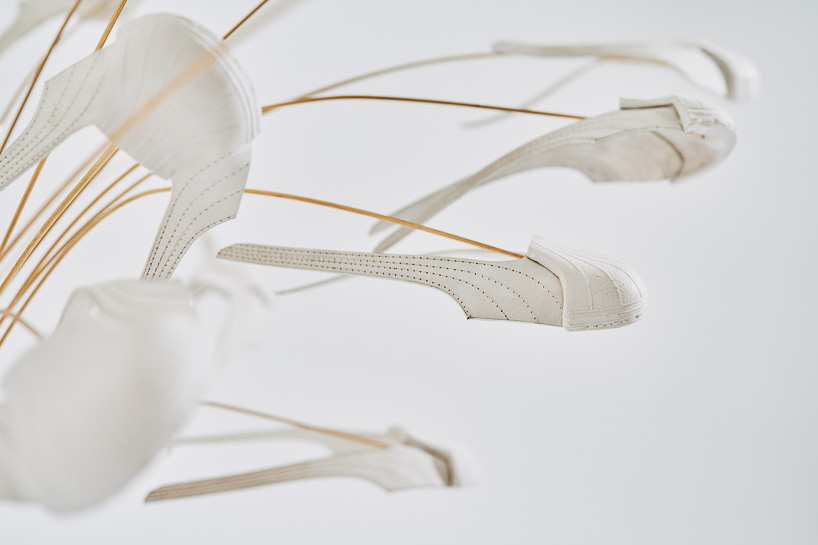
the kinetic nature of 1520 mimics the perpetual motion of breakdancers
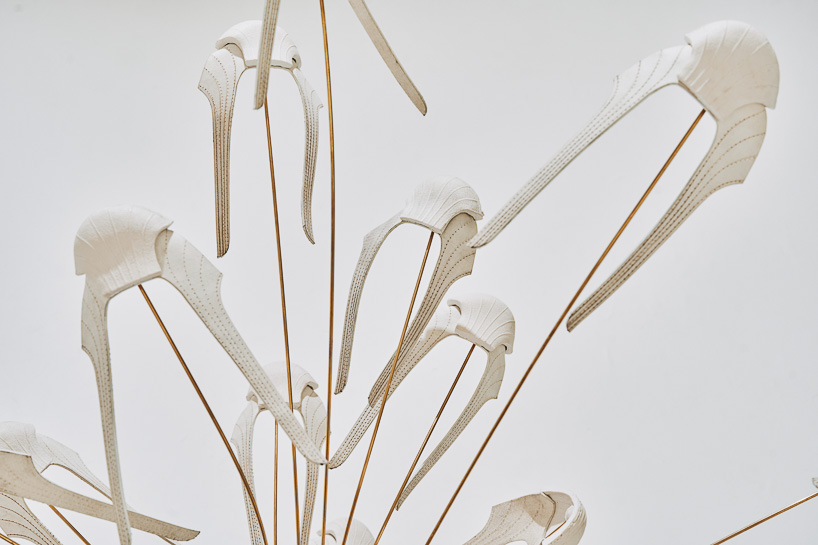
the avian figure is crafted from Jesmonite and suede, nodding to iconic breakdancing footwear
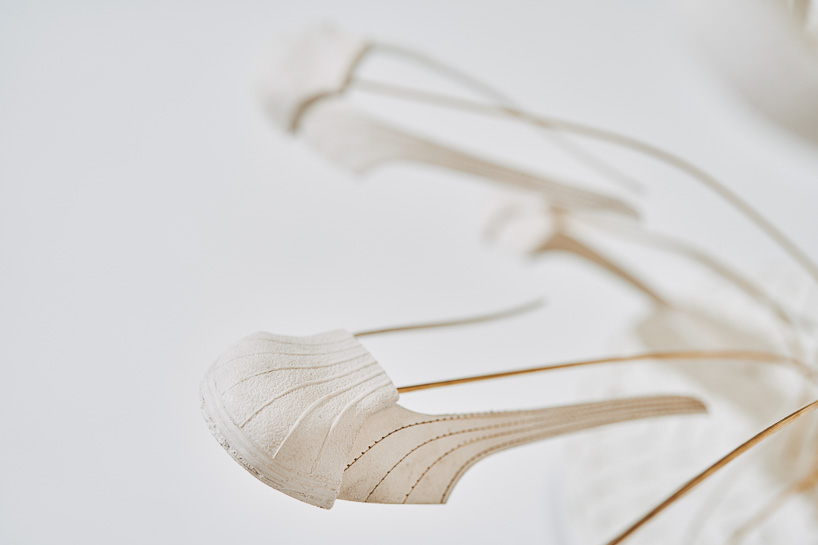
suede wings, laser-cut for precision, enhance the sculpture’s functional and aesthetic appeal

1520 embodies the spirit of breaking and hip-hop culture
[ad_2]
Source link

